













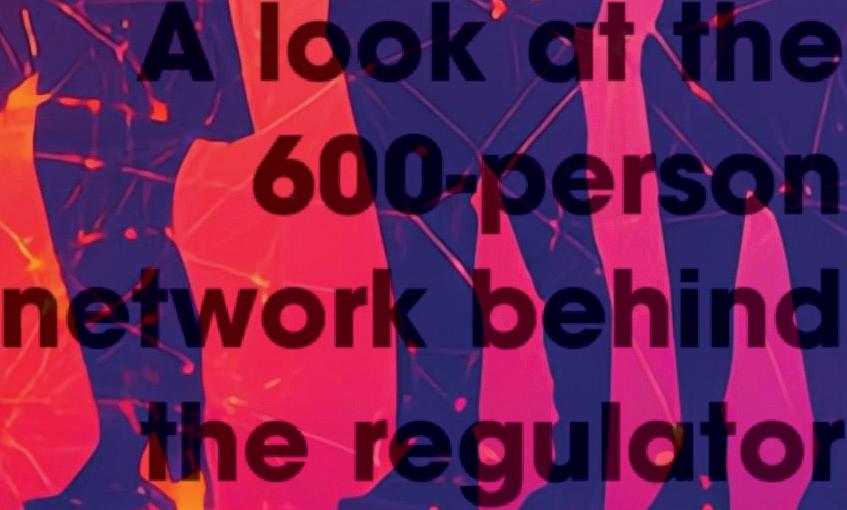
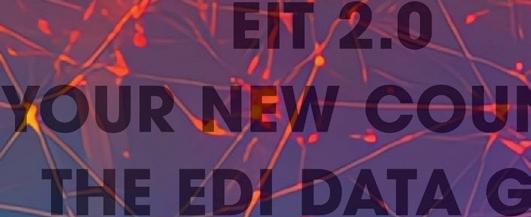
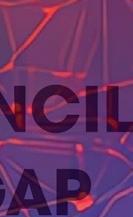

Engineers Canada-sponsored Insurance Plans can help you create all-around protection for your loved ones’ health, finances, and more. They’re exclusive to engineers, technicians, technologists, and geoscience professionals—and offered at some of the very best rates in the industry.


•
•
•
•
15% off for coverage amounts of $1,000,000 or more

The engineering profession is evolving to create a more inclusive future—one where 2SLGBTQ+ engineers and aspiring engineers feel seen, respected and valued.
By Sharon Aschaiek
ASSOCIATION BUSINESS
5 Editor’s Note
7 CEO/Registrar’s Report
23 Gazette
39 2026 Order of Honour Call for Nominations
40 Introducing PEO Council 2025–2026
48 In Council: Council Approves 2026–2030 Strategic Plan
NEWS AND COMMENTARY
8 News: Council Endorses New EIT 2.0 Program, Seeks Legislative Changes; Fred Saghezchi Becomes President at PEO’s AGM; PEO Launches New Employer Advisory Group
22 Bulletin Board
With a renewed focus on volunteer engagement, PEO is strengthening its chapter network to better serve licence holders and the public.
By Angela Frangos
PROFESSIONAL ISSUES
37 Professional Practice: The Engineer’s Seal: Your Questions Answered
ADVERTISING FEATURES
50 Ad Index
Managing editor
Nicole Axworthy
Senior writer
Prasanthi Vasanthakumar
Senior graphic designer
Cindy Reichle
Contributors
Sharon Aschaiek
Angela Frangos
Jane Mustac
Sarah Starr
Engineering Dimensions (ISSN 0227-5147) is published quarterly by Professional Engineers Ontario and is distributed to all PEO licence holders.
Engineering Dimensions publishes articles on regulatory business and professional topics of interest to the professional engineer. The magazine’s content does not necessarily reflect the opinion or policy of PEO Council, nor does PEO assume any responsibility for unsolicited manuscripts and art. All material is copyright. Permission to reprint editorial copy or graphics should be requested from the editor.
Approximately $5 from each membership fee is allocated to Engineering Dimensions and is non-deductible.
Canada Publications Mail Product Sales Agreement No. 40063309. Printed in Canada by Wellington Printworks Inc.
Finally Content
Vice president, media sales
Laura Maurice laura.maurice@finallycontent.com 647-394-5567
CONNECT WITH US Online: engineeringdimensions.ca Email: editor@peo.on.ca
TO UPDATE YOUR SUBSCRIPTION
All licence holders and engineering interns registered with Professional Engineers Ontario receive Engineering Dimensions in print or digital form. Subscription preferences can be updated in the PEO portal at secure.peo.on.ca. Other subscription requests can be made to editor@peo.on.ca.
EXECUTIVE STAFF
CEO/registrar
Jennifer Quaglietta, MBA, P.Eng., ICD.D
Vice president, regulatory operations and deputy registrar
Americo Viola, MBA, P.Eng.
Vice president, policy and governance and chief legal officer
Dan Abrahams, LLB
Vice president, corporate operations and digital transformation
Arun Dixit, P.Eng.
Chief people officer
Deborah Sikkema
PEO COUNCIL Officers
President
Fred Saghezchi, MASc, P.Eng., FEC president@peo.on.ca
Past president and Council chair Gregory P. Wowchuk, P.Eng., FEC
President-elect
Leila Notash, PhD, P.Eng., FEC
Vice president (elected)
Sardar Asif Khan, PhD, MBA, P.Eng., FEC, PMP
Vice president (appointed) Randy Walker, P.Eng.
Executive Members
Shahandeh Hannah Ehtemam, P.Eng. Lorne Cutler, MBA, P.Eng.
Councillors
Councillors-at-large
Sean Decloux, MEng, MBA, P.Eng., PMP
Paula R. Klink, PhD, P.Eng., FEC
Randy Walker, P.Eng.
Eastern Region councillors
Chantal Chiddle, P.Eng.
Susan Jingmiao Shi, MEng, P.Eng.
East Central Region councillors
Shahandeh Hannah Ehtemam, P.Eng.
Nanda Layos Lwin, P.Eng., FEC
Northern Region councillors
Ahmed Elshaer, PhD, P.Eng.
Luc Roberge, P.Eng., FEC
Western Region councillors
Vicki Hilborn, MASc, P.Eng.
Susan MacFarlane, MSc, PhD, P.Eng.
West Central Region councillors
Pappur Shankar, P.Eng., FEC
Ravinder Panesar, P.Eng., FEC
Lieutenant governor-in-council appointees
Lorne Cutler, MBA, P.Eng.
Andrew Dryland, C.E.T.
Paul Mandel, MBA, CPA, CA
Andrew Naassan, P.Eng.
Rachel Prudhomme, BEng, MSc, P.Eng., BPHE
Scott Schelske, P.Eng., FEC
Uditha Senaratne, P.Eng., FEC
Sherlock Sung, BASc
Engineers Canada Directors
Arjan Arenja, MBA, P.Eng., ICD.D
Christopher Chahine, P.Eng., PMP
Nick Colucci, MBA, P.Eng., FEC
Tim Kirkby, P.Eng., FEC
Marisa Sterling, P.Eng., FEC
www.peo.on.ca
The office of Professional Engineers Ontario in the City of Toronto is situated on the traditional territory of many nations, including the Mississaugas of the Credit, the Anishnabeg, the Chippewa, the Haudenosaunee and the Wendat peoples.

In meeting spaces, school auditoriums and community halls across Ontario, professional engineers are doing more than practising their profession. They are dedicating their time and energy to outreach, mentorship and public engagement, reinforcing engineering principles and cultivating a profession rooted in public service.
They are the more than 600 volunteers in PEO’s 36 local chapters in the province— from Lake of the Woods to Windsor. Whether they’re organizing licence presentation ceremonies, mentoring engineering interns or inspiring students to consider a career in engineering, their work is a reminder that earning the P.Eng. designation is not just a personal milestone but a public commitment.
What’s especially inspiring is that this work is driven by people who care deeply. They believe that licensure matters and that engineers have a role to play in the future of their profession. PEO’s chapters serve as vital touchpoints between the regulator and the public, helping make our work more visible, accessible and trusted.
In this issue, we take a closer look at how PEO is strengthening that connection. In “Strength in Structure” (p. 31), contributing writer Angela Frangos explores how chapter activities are evolving, backed by new initiatives aimed at improving volunteer support, clarifying roles and responsibilities and ensuring alignment with PEO’s public-interest mandate. It’s a timely and forward-looking conversation, especially as we work to build PEO into a modern, responsive regulator.
We also hear from members of the 2SLGBTQ+ community in “Queer Engineers Belong Here” (p. 18). These stories are can-
did and thought-provoking, touching on what inclusion—or the lack of it—can feel like in professional spaces. As contributing writer Sharon Aschaiek reports, one major challenge is the absence of data: Without knowing how many 2SLGBTQ+ engineers are working in the profession, or how their experiences compare, it’s difficult to measure progress or advocate for meaningful change.
But we can’t let a lack of data stop us from taking action. Creating a more inclusive engineering profession isn’t a task for one group or organization. It’s something we all need to take part in. That means listening more carefully, speaking up when it matters and actively shaping a culture where every engineer and aspiring engineer feels seen, respected and valued.
We also bring you updates on PEO’s EIT 2.0 program (p. 8), which Council has now officially endorsed. With this modernized approach, we’re laying the groundwork for a structured and supportive experience for engineering graduates on the road to licensure. Plus, don’t miss our coverage of PEO’s 2025 Annual General Meeting (p. 10) and your introduction to the members of Council for the 2025–2026 term (p. 40).
As you flip through these pages, I hope you’ll take a moment to reflect on the kind of profession we’re shaping together and the powerful role connection, community and representation play in making it stronger. e








Nicole Axworthy MANAGING EDITOR


PEO’s 36 chapters demonstrate that local engagement is key to a stronger, more connected engineering profession. By enhancing connections with licence holders, they are reinforcing PEO’s commitment to protecting the public and advancing the profession.
LET US KNOW
To protect the public, PEO investigates all complaints about unlicensed individuals or companies, and unprofessional, inadequate or incompetent engineers. If you have concerns about the work of an engineer, ll out a Complaint Form found on PEO’s website and email it to complaints@peo.on.ca
If you suspect a person or company is practising engineering without a licence, contact PEO’s enforcement hotline at 800-339-3716, ext. 1444, or by email at enforcement@peo.on.ca.

YOU NOW HAVE THE OPTION TO RECEIVE a print or digital version of Engineering Dimensions.

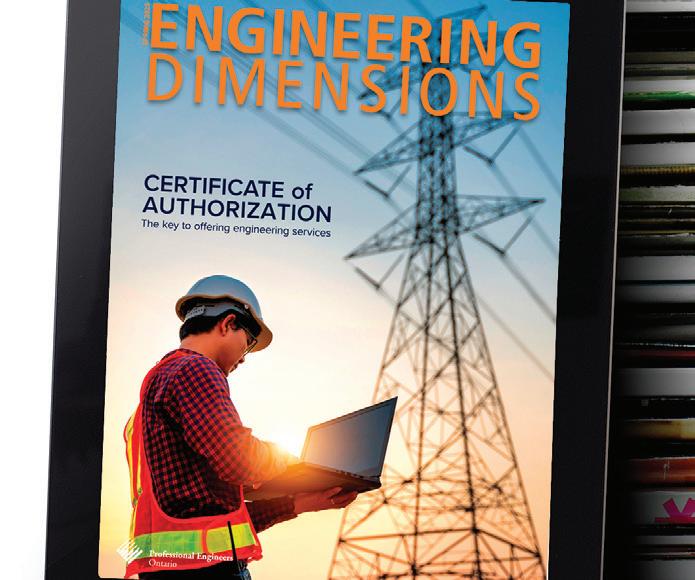



Go to www.peo.on.ca and click on “Log In” at the top of the homepage. You will be directed to the PEO portal, where you can log in and choose the print or digital version of Engineering Dimensions under the Profile tab. If you don’t choose a preference, you will continue receiving the digital version. To ensure the magazine gets to you, please check that your email and mailing addresses are updated in the portal, too.
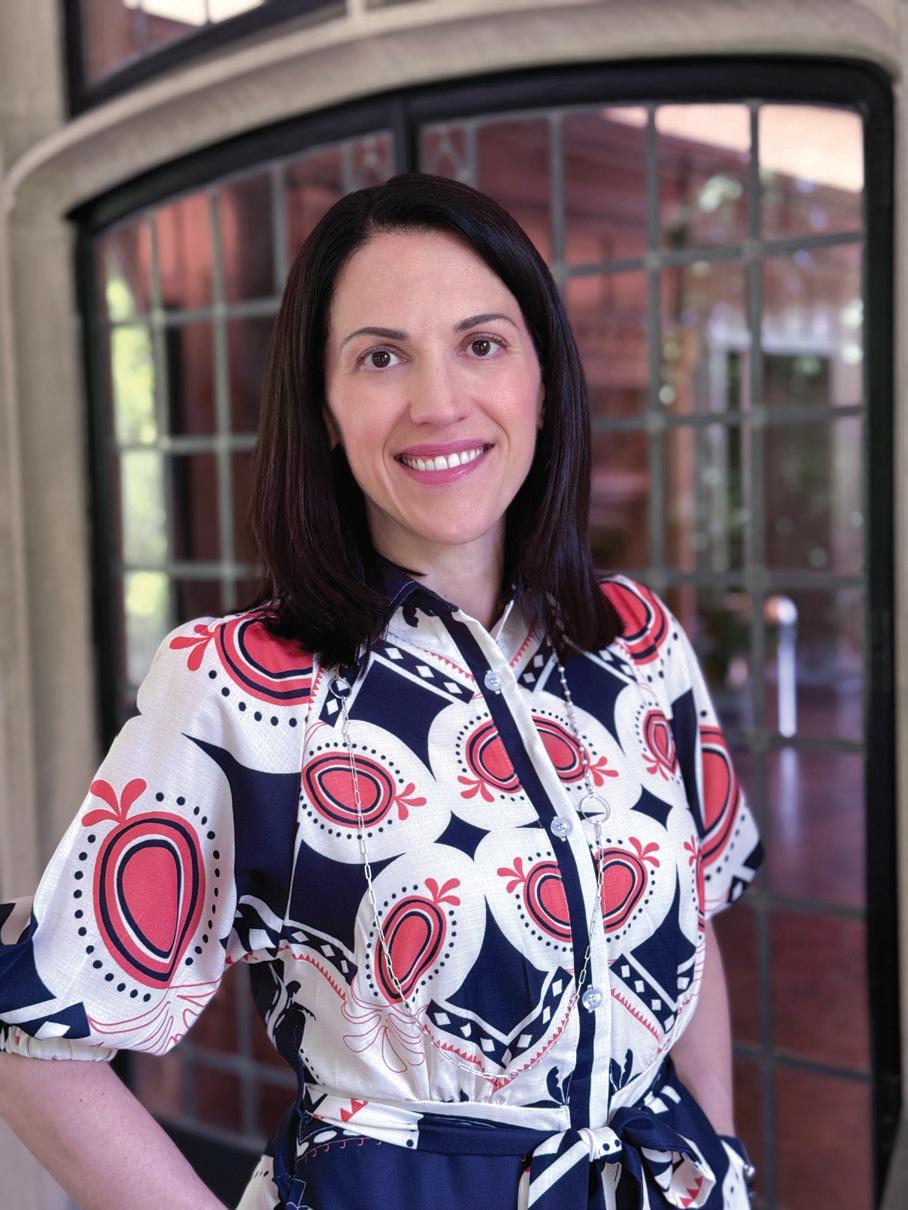
role as a regulator seriously, but we also make time for connection and community. To celebrate this special occasion, we brought together our dedicated staff of about 150 employees to honour our achievements, continue building a purpose-driven workplace, and reinforce our priorities and actions for the coming years.
With this focus on the future, I’m pleased to announce that Council has approved PEO’s 2026–2030 Strategic Plan. This plan is the product of extensive research and consultations with our various stakeholders, from licence holders to Ontario ministry officials. It takes effect on January 1 and will be the North Star in our continued journey toward regulatory excellence.
Based on three transformational pillars— governance advancement, organizational excellence and effective and relevant regulation—our new strategic plan aligns with our commitment to accountability, transparency, adaptability and efficiency.
To achieve governance advancement, we will champion effective leadership and decision-making with a “public interest first” mindset. For organizational excellence, we will nurture a high-performing organization through our people, processes and systems. And to deliver effective and relevant regulation, we will model regulatory and governance excellence in how we oversee the engineering profession.
Part of our work to realize this final pillar includes a comprehensive review and proposed updates to the Professional Engineers and its regulations. Like us, this act is 103 years old, but its last major update was in 1984. As PEO transforms into a modern, right-touch regulator, the act, too, must keep up with the times and evolve alongside the engineering profession and society at large.
These may seem like lofty goals. But as Ontario’s engineering regulator, we set high standards for both ourselves and the professionals we oversee. I look forward to collaborating with PEO staff to develop an operational plan that delivers on all three strategic pillars.
An important part of being a modern regulator is continuous listening, learning and action—key elements of our commitment to fostering an equitable, diverse and inclusive profession. PEO is taking another step to advance these priorities by inviting licence holders to voluntarily share their demographic information through PEO’s online portal starting this month.
In line with our Anti-Racism and Equity Code, this initiative will help us better understand the diversity of the profession, reflect the intersectional identities of the people we license and regulate, and identify and address barriers to inclusion. The information will support greater transparency, guide meaningful action and help us build a profession where everyone feels represented and welcomed.
In another forward-looking move, Council endorsed the redesign of the Engineering Intern (EIT) program to better meet the needs of aspiring engineers. The new EIT 2.0 program supports participants in gaining relevant experience for licensure, while upholding regulatory oversight and ethical conduct.
Engineering graduates who are working toward their P.Eng. designation are an important part of our community and the future of the profession. I’m excited to assist and encourage them on their path to licensure with this modernized program.
Times are changing, and professional regulators are navigating new challenges and expectations. Here at PEO, I’m confident we are well-positioned to maintain public confidence, enhance compliance and support the engineering profession today and tomorrow. e
Jennifer Quaglietta,
PEO’s revamped Engineering Intern program will launch following amendments to the Professional Engineers Act.
By Nicole Axworthy

PEO Council has officially endorsed the creation of a modernized Engineering Intern (EIT) program, called EIT 2.0, marking a significant step in enhancing support for engineering graduates on the path to obtaining their professional engineer (P.Eng.) licence. The new program will be implemented once the necessary amendments to the Professional Engineers Act (PEA) and its regulations are made.
At its June meeting, Council approved the detailed proposal for EIT 2.0 and directed staff to collaborate with the Ministry of the Attorney General to begin the legislative changes required for its launch. EIT 2.0 replaces PEO’s previous program, which became inoperable in 2023 when PEO rolled out an updated licence application process to align with new requirements under the Fair Access to Regulated Professions and Compulsory Trades Act.
EIT 2.0 is designed as an optional, pre-licensure program that provides participants with the titles “engineering intern,” “engineer-in-training” or “EIT.” To be eligible, participants must be engineering graduates who have met the academic requirements for licensure and passed the National Professional Practice Exam and good character assessment. PEO will provide individuals who have EIT status under the original EIT program with the opportunity to enroll in the EIT 2.0 program.
While not mandatory for licensure, the program gives applicants formal recognition, structured support and regulatory oversight as they work toward meeting their engineering experience requirement. Notably, the program recognizes the diverse pathways individuals take to gain professional engineering experience, including those earned internationally and in other provinces.
By providing regulatory oversight and fostering ethical conduct, the program aligns with PEO’s mandate to protect Ontarians by setting and upholding high standards for engineering practice. Under EIT 2.0, participants are expected to file annual reports detailing their progress toward licensure, uphold standards of good character and ethical conduct and pay an annual fee. Program benefits include:
• Access to an online platform allowing participants to build a competency-based assessment portfolio as they meet the experiential requirement;
• Optional mentorship opportunities with a P.Eng.;
• Expectations and reporting requirements for EIT employers to ensure safe and fair work and learning environments;
• Protected use of the titles “engineering intern,” “engineer-in-training” and “EIT”; and
• Eligibility to participate in PEO’s local chapters.
Council has the option to revisit and refine certain policy elements, such as program duration and fee structures.
Council’s decision follows months of research, development and consultation. Stakeholders—including focus groups, an online survey and consultation with PEO’s Strategic Stakeholder Advisory Group (SSAG)—expressed strong support for the program’s direction, particularly its ethical framework and public-interest focus.
“Extensive stakeholder consultation and careful analysis were instrumental in shaping an EIT program that reflects the needs and expectations of the engineering community,” says David Smith, PEO’s director, external relations. “Overall feedback on the program’s vision and components was positive, and thoughtful input from the SSAG led to further refinements that were incorporated into the EIT 2.0 proposal.”
The program’s precise timeline for rollout remains uncertain because its implementation depends on amendments to the PEA. Meanwhile, internal preparations are already underway. This includes developing educational tools, such as webinars, FAQs and guidance documents, to raise awareness among prospective EITs, employers and the public about the program’s value and expectations.




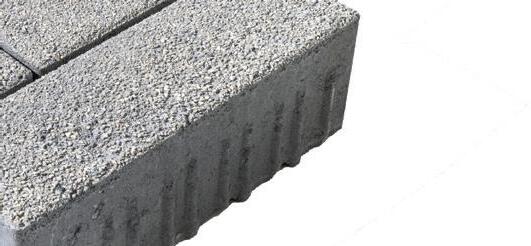

Connect with a Unilock Representative to learn more about Load Lock™.
Load Lock is an innovative, patented jointing technology for pavers. It enhances structural integrity of engineered paving systems by delivering superior lock-up and minimizing the risk of paver breakage or shifting, without compromising aesthetics. Bring a new level of anti-movement and anti-breakage protection to your next paving design, with Load Lock, from Unilock. PAVER
The 2025 Annual General Meeting welcomed councillors of the 2025–2026 Council term, including new President Fred Saghezchi.
By Nicole Axworthy
At PEO’s 103rd Annual General Meeting (AGM) on April 26, Fred Saghezchi, MASc, P.Eng., FEC, was formally invested with the presidential chain of office, marking the start of his term as president for 2025–2026.
“It is with great pleasure and humility that I stand before you today at the outset of my term as PEO president. I’m deeply grateful for the trust you have placed in me to lead this organization in the year ahead,” Saghezchi told AGM delegates.
In his inaugural address, Saghezchi shared his vision for PEO, including reestablishing the Engineering Intern (EIT) program, better recognizing volunteers and strengthening the chapter system. “My primary mission is to reunite PEO by bridging the divides between the Council, chapters, staff, volunteers, committees and members,” he said. “Together, we must collaborate as a unified team, upholding the core values and vision that define our organization.”
In his final act as PEO’s 2024–2025 president, Gregory P. Wowchuk, P.Eng., FEC, presided over the AGM, first welcoming special guest Michael Tibollo, LLB, associate attorney general and MPP for Vaughan–Woodbridge. Tibollo emphasized the importance of systems, structure and boundaries—principles central to engineering but increasingly overlooked in society. “As professional engineers, one of the most important things you understand is systems and structure and boundaries,” Tibollo said.
Drawing from his previous role as minister of mental health and addictions, Tibollo shared his efforts to expand access to treatment centres and support services in underserved communities. He called for greater collaboration between government and organizations like PEO to better understand community needs. “To me, more collaboration needs to take place with different organizations that are actually doing the heavy lifting,” Tibollo said. “We need a lot of engineers; we need a lot more work done in terms of building infrastructure for this province.”
Lorne Cutler, MBA, P.Eng., chair of PEO’s Audit and Finance Committee, provided a report on the 2024 audited financial statements. He shared key highlights, including that:
• PEO’s revenue was $37.1 million in 2024 versus $37.6 million in 2023;
• Expenses in 2024 were $35.8 million versus $33.3 million in 2023;
• PEO had a surplus of $1.3 million in 2024 versus $4.3 million in 2023;
• PEO’s cash and marketable securities increased to $40.6 million versus $38.1 million in 2023; and
• PEO continues to have the lowest P.Eng. fees in Canada.
“Overall, the association’s finances are healthy and are expected to remain so for the foreseeable future,” Cutler said.
At the meeting, CEO/Registrar Jennifer Quaglietta, MBA, P.Eng., ICD.D, outlined PEO’s work in 2024 to modernize its regulatory processes while strengthening its public-protection mandate. She detailed several key accomplishments, including a 45 per cent reduction in the licensing backlog and full compliance with provincial requirements for licensing timelines. She highlighted the successful adoption of a competency-based assessment model for licensing, which was recognized by the Ontario fairness commissioner as a more equitable and inclusive approach.
Quaglietta noted that the regulator also made strides in its continuing professional development program, PEAK, with nearly 90 per cent of licence holders completing initial requirements. “Thank you to our engineers for fulfilling this new regulatory obligation,” Quaglietta said.
Quaglietta also reaffirmed PEO’s commitment to equity, diversity and inclusion (EDI), noting the ongoing implementation of the EDI Action Plan. She credited Council, staff and PEO’s nearly 900 volunteers for their dedication supporting this regulatory work. Looking ahead, she underscored PEO’s commitment to regulatory excellence grounded in both professionalism and compassion. “At the heart of effective regulation is not only diligence and integrity but also kindness. A fair, transparent and compassionate approach ensures we regulate with both strength and empathy, fostering trust and collaboration with the engineering community and the public,” Quaglietta concluded.

President Wowchuk’s outgoing speech highlighted decisions made by Council to support PEO’s 2023–2025 Strategic Plan, including reintroducing an improved EIT program that serves the regulator’s mandate while meeting the needs of stakeholders, approving an enterprise-wide risk-management policy to ensure PEO is overseeing governance and operations effectively, and directing staff to create a fitness-to-practise process to address concerns about a practitioner’s ability to practise engineering competently and safely due to health conditions.
“Thanks to all of you for the trust you placed in me to lead Council this year. We have had some animated discussions at Council this year,” Wowchuk told attendees. “Both staff and the outgoing Council deserve thanks for their hard work this last year. Being ‘on the inside’ at PEO has shown me just how dedicated and professional our administrative arm under CEO/Registrar Quaglietta is. They rely on a visionary and diligent Council to do its part in generating policy.”
At each AGM, licence holders can submit motions to express their perspectives on matters related to PEO. Attending licence holders are given the opportunity to comment and vote on each motion. While the motions are non-binding, they are reviewed and considered by Council. This year, four motions were submitted for discussion.
The first motion, submitted by Saghezchi and seconded by George Pavelov Nikolov, P.Eng., proposed amendments to bylaws or regulations and to the Professional Engineers Act (PEA) to strengthen the role of the president. It introduced conditional authorities, such as initiating referenda, dissolving Council under exceptional circumstances and negotiating with government; and full sole authorities, such as resolving internal conflicts, approving financial decisions and terminating senior staff. The motion also proposed that the president would serve a two-year term without term limits, act as PEO’s sole public spokesperson and receive full indemnification if actions comply with legislation and regulations. The motion failed when voted on by attending licence holders, with 75 per cent voting against it.
The second motion, submitted by Saghezchi and Roger Edward Jones, P.Eng., proposed bylaw or regulation amendments to clarify that P.Engs are the primary stakeholders and true owners of PEO. It affirmed that Council is elected by and accountable to these stakeholders, with a mandate to govern the profession and protect the public interest. PEO staff, including the registrar, must follow Council-approved rules unless they conflict with legislation or face strong stakeholder opposition. For major rules affecting most stakeholders, a general referendum would be required, with the final decision resting with Council if preliminary stakeholder support is secured. The motion failed, with 81 per cent of attending licence holders voting against it.
The third motion, submitted by Prakash Bansod, P.Eng., and seconded by Zeljko Sikic, P.Eng., called on Council to establish a Code of Ethics committee to review and assess whether the current Code of Ethics needs revision considering advancements in technology and evolving geopolitical issues. The committee would consider a range of suggested topics and report its recommendations to Council by the end of 2025. The motion also proposed that the code be treated as a living document, with updates made regularly at a frequency determined by Council. The proposal was supported by concerns over the “Manhattan Syndrome,” a phenomenon where professionals face ethically compromised decisions due to lack of institutional guidance, potentially leading them to act against their own moral judgment under managerial pressure. The motion passed, with 55 per cent of attending members voting for it.
The fourth motion, submitted by Ahmad Khadra, P.Eng., and Peter Keays, P.Eng., proposed that Council implement a formal performance review system for PEO staff to ensure organizational efficiency and accountability. Given that nearly half of PEO’s 2023 operational expenses were allocated to staff salaries and benefits, and in line with the 2023–2025 Strategic Plan goals of optimizing performance and promoting continuous improvement, the motion highlighted a lack of periodic staff performance assessments. It recommended that each department, program and employee be regularly evaluated against clear deliverables using modern best practices. Annual updates on performance outcomes would be shared with licence holders as part of the operational plan status report. The motion failed, with 68 per cent of attending licence holders voting against it.
Wowchuk took time to recognize outgoing councillors whose term ended at the AGM. They included Past President Roydon Fraser, PhD, P.Eng., FEC, Vice President (elected) Guy Boone, P.Eng., Eastern Region Councillor Mic Lui, MASc, JD, P.Eng., Lieutenant Governor Appointee George Nikolov, P.Eng., and Councillor-at-Large Glen Schjerning, P.Eng.
The councillors of the 2025–2026 term (see p. 40) were also introduced to AGM attendees.
Following the formal meeting and lunch, keynote speaker Tracey Adams, PhD, sociology professor and researcher at Western University, gave a presentation about navigating professional self-regulation in the public interest in an era marked by rapid technological advancement, shifting political landscapes, evolving social expectations and economic volatility. Her talk highlighted how the role of professional regulation is evolving and what it means for those tasked with upholding professional standards.
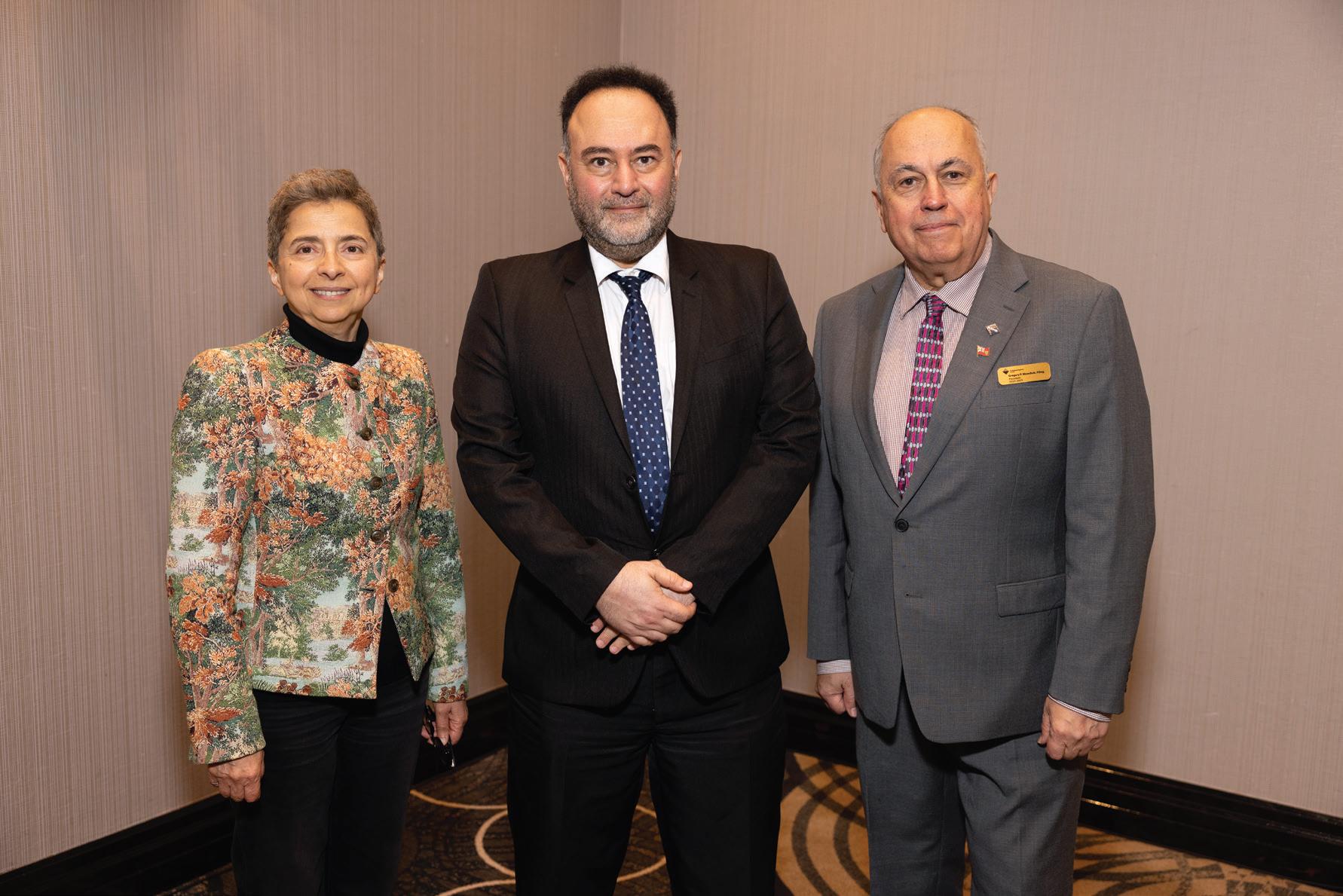
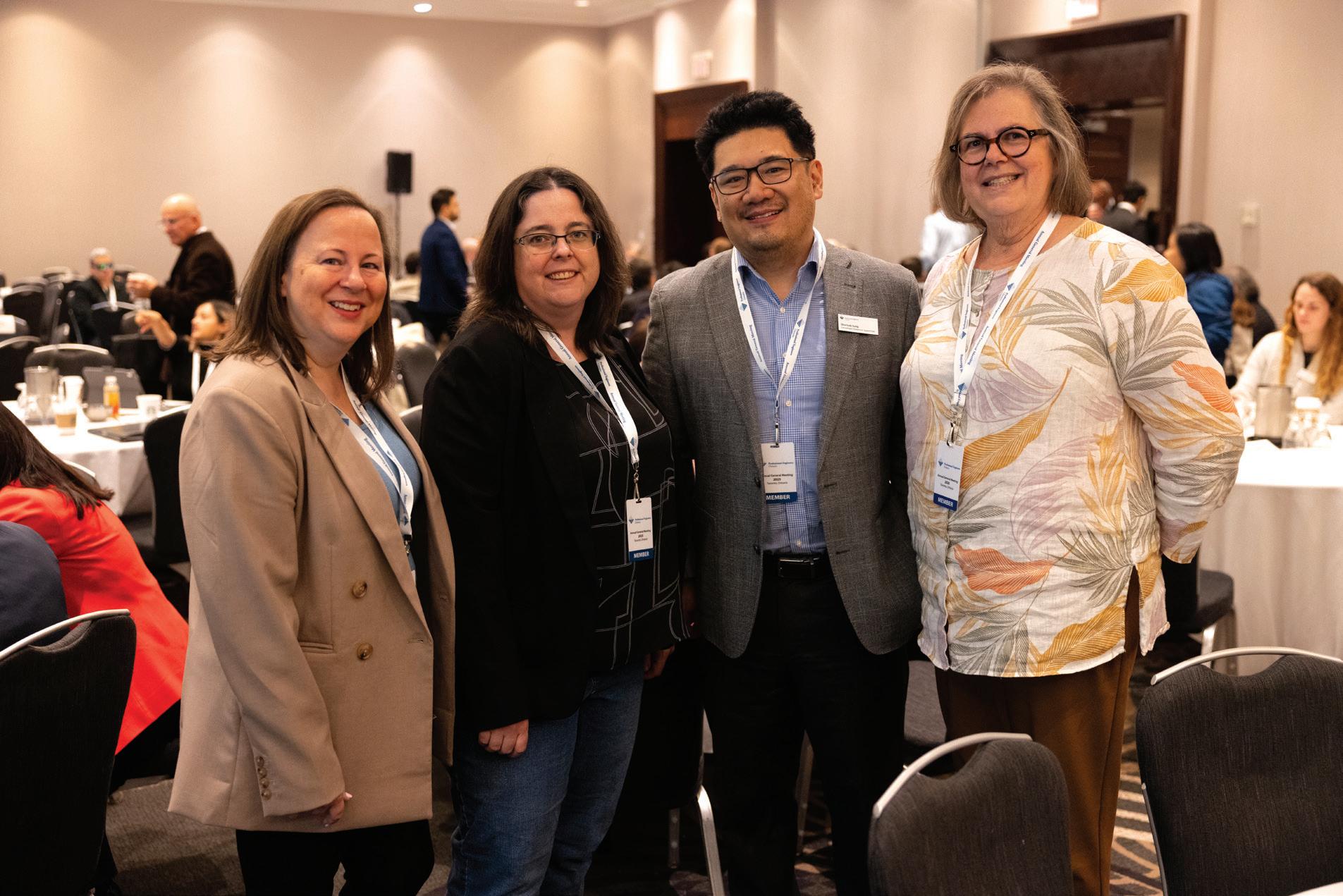
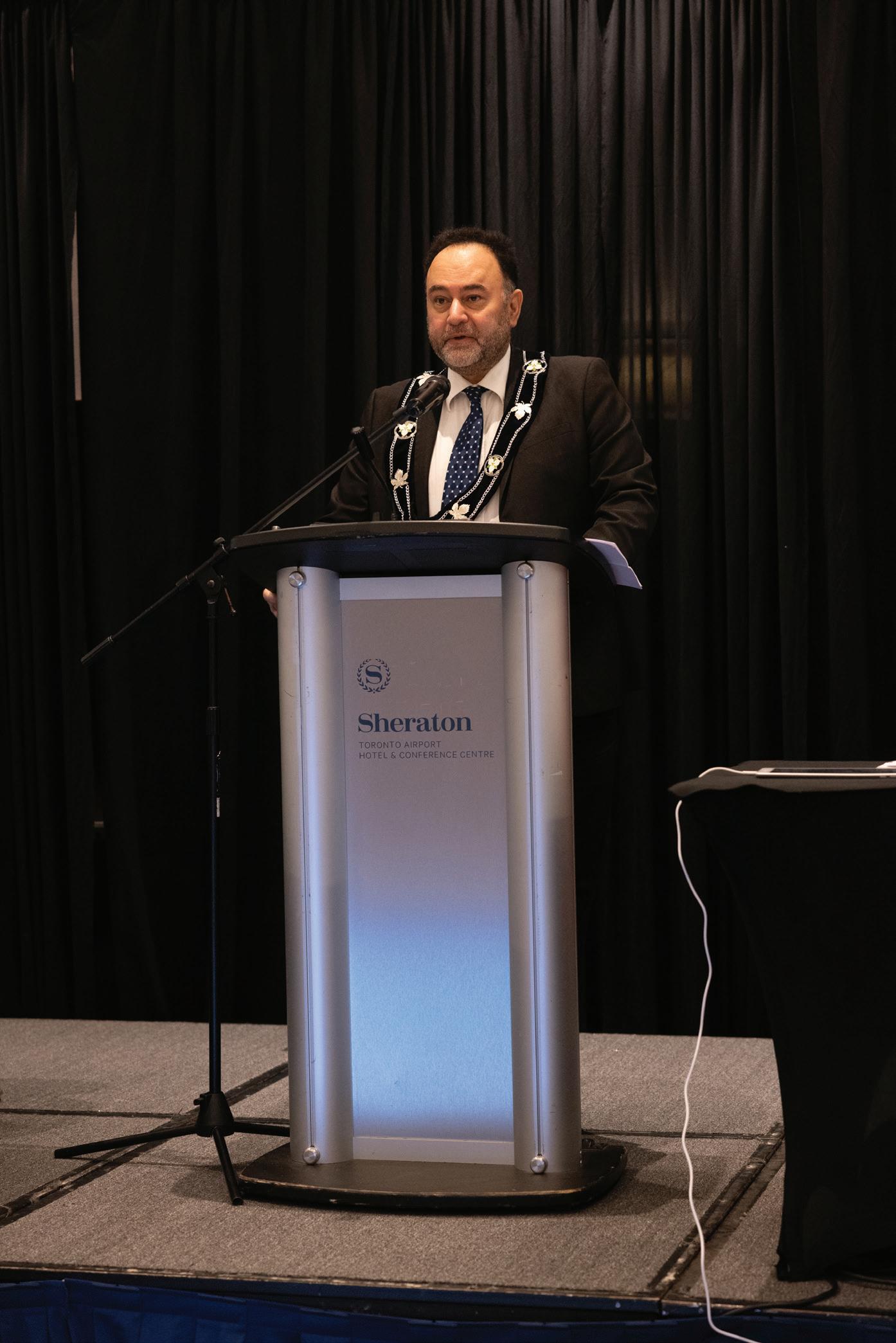
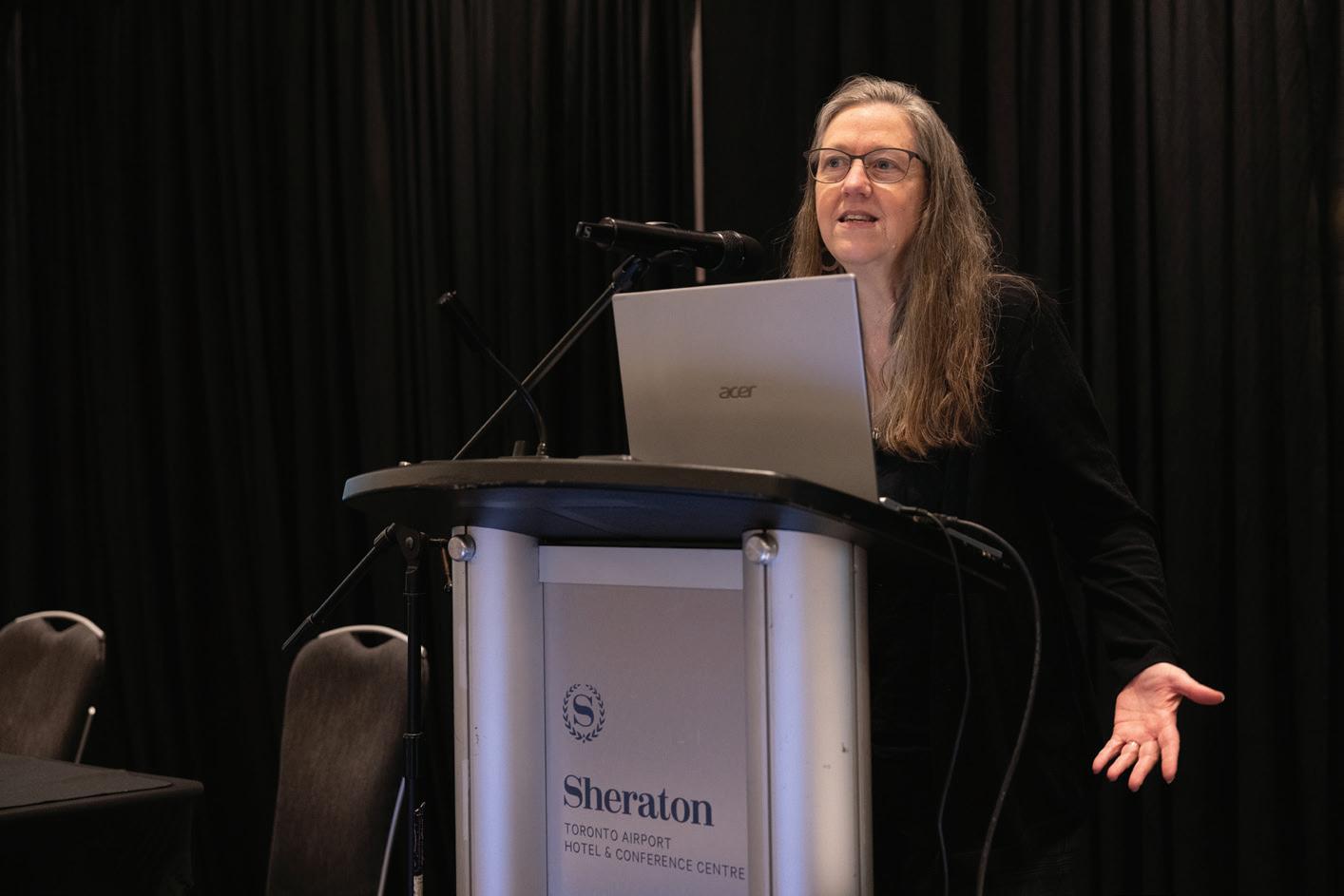
Keynote speaker Tracey Adams, PhD, sociology professor and researcher at Western University, speaks about current challenges for self-regulating professions.
Attendees at the AGM included (from left to right) Eastern Region Councillor Chantal Chiddle, P.Eng., Western Region Councillor Vicki Hilborn, MASc, P.Eng., Lieutenant Governor–Appointed Councillor Sherlock Sung, BASc, and Councillorat-Large Paula Klink, PhD, P.Eng., FEC.
“People are increasingly mistrusting experts but also expert institutions, and that would include regulatory bodies like PEO,” Adams said. “Professional self-regulation is based on trust. People trust regulatory bodies to regulate in the public interest and to get it right, and if people are mistrusting generally in social institutions and especially in experts, I think that is an inherent challenge to regulatory bodies and self-regulation.”
While there is a need to manage such risks, including pressures toward de-regulation, Adams emphasized the value of self-regulation and the P.Eng. “In defense of self-regulation, I think it emphasizes safe and ethical practice,” Adams said.
The last session of the day was a presentation and discussion about the new EIT program policy proposal, presented by Regulatory Policy and Legislation Committee Chair Vicki Hilborn, MASc, P.Eng., Senior Director of Governance Marina Solakhyan and Director of External
Relations David Smith. At the Council meeting on April 4, Council endorsed an EIT program as a pathway to licensure and directed the Regulatory Policy and Legislation Committee to bring a detailed program proposal and a high-level action plan to its June meeting (see p. 49).
Hilborn shared the key elements of the program, which is designed to support participants in gaining relevant, hands-on experience as they progress toward becoming licensed professionals. While enrollment in the program will be optional, those who choose to participate as EITs will be required to meet all program requirements.


















The new digital certificate complements your existing printed version by giving you more flexibility over how you share your credentials. Now you can:
✔ Share your verified licence through email, text or social platforms like LinkedIn
✔ Add it to your digital resume, portfolio or personal website
✔ Let anyone verify your licence with a single click or scan
YOUR DIGITAL CERTIFICATE IS ENCRYPTED, PROFESSIONALLY RECOGNIZED AND EASILY ACCESSIBLE.
Here’s how to access it:
1. Log into the PEO portal at secure.peo.on.ca
2. Click the Profile tab
3. Select Licence Profile
4. Navigate to the Digital Certificate section
5. Click the link to access your unique and secure digital certificate URL
Present your digital certificate publicly, allowing anyone to validate your PEO licence with ease.
PEO has created a new advisory group to hear more frequently from an important community: employers of engineers and engineering interns.
By Prasanthi Vasanthakumar

PEO’s Employer Advisory Group (EAG) met for the first time on July 2, bringing together a diverse group of individuals to share insights on key regulatory policy initiatives from the perspective of engineering employers.
The new advisory group was built on the momentum of outreach efforts for the redevelopment of PEO’s Engineering Intern (EIT) program. “Through our recent consultations on the redevelopment of the EIT program, we realized there was an opportunity to better engage one of our biggest stakeholder groups,” says Charles Blanco, PEO’s manager, stakeholder relations. “We also discovered from these consultations that there was a strong interest among engineering employers to share feedback on a variety of issues with us, which was great to learn.”
The EAG operates as a discussion group and a source of ideas for further deliberation, rather than a decisionmaking body. It will help ensure policies contemplated by PEO consider employers’ viewpoints.
“The work of the EAG supports our main objective of ensuring PEO delivers well-considered and sound policy, as well as credible regulatory outcomes,” notes Blanco. “Engaging this group also provides a valuable and continuous link between PEO, employers and industry.”
Initially comprising nine volunteers who will serve a two-year term, the advisory group represents a broad cross-section of engineering employers—from the Toronto Transit Commission (TTC) and City of Ottawa to mining
and technology companies. All advisory group members are involved in recruiting, managing or overseeing the work of engineers at their respective organizations.
As part of its mandate, the EAG will serve as a sounding board for proposed and existing policies. It will also:
• Keep PEO current with information critical to employers;
• Share employer perspectives and expectations related to PEO’s mission;
• Identify trends in employer engagement and recruitment;
• Act as a resource on employment and workforce development issues; and
• Flag employment issues that may impact PEO’s mandate.
The advisory group may comment on regulatory matters such as licensing and registration, professional practice and general regulatory issues, including continuing professional development.
As PEO’s second advisory group, the EAG follows the May 2024 creation of the Strategic Stakeholder Advisory Group (see “New Strategic Stakeholder Advisory Group Takes Flight,” Engineering Dimensions, Summer 2024, p. 11). Both groups are supported and managed by staff in PEO’s external relations department.
“Our advisory groups bring together individuals with deep knowledge and experience in specific fields related to our work,” says Blanco. “They provide a platform for discussions to help us identify potential risk and opportunities, challenge existing assumptions, ensure we’re asking the right questions and engage the appropriate people. The use of advisory groups also shows our commitment to good governance, transparency and a willingness to seek feedback from those who are affected by our decisions.”
The inaugural members of the Employer Advisory Group are:
Adekola Oladewa, P.Eng., program lead, engineers-in-training, Toronto Transit Commission
Monica Danon-Schaffer, senior manager, global health and safety, Kinross Gold
Lisa Doucet, P.Eng., business excellence manager, Siemens Canada Limited
Sue Fortin, program manager, organizational design/job evaluation and pay equity, City of Ottawa
Phil Jones, vice president, engineering and logistics, EllisDon
Catherine Mammoliti, HR manager, CSA Group
Sheeba Paul, P.Eng., senior associate, senior acoustic engineer, HGC Engineering
Peter Purdy, P.Eng., division manager, Bruce Power Rohan Service, P.Eng., supervisor low carbon infrastructure (CNG & RNG) operations, Enbridge Gas Inc.

PEO’s mandatory Practice Evaluation and Knowledge (PEAK) program is designed to help licence holders maintain their professional knowledge, skills and competence as engineers and is in keeping with PEO’s regulatory, public protection mandate as set out in the Professional Engineers Act.
Licence holders must comply with the annual program unless they are automatically exempt (those enrolled in PEO fee remission, like retirees). Not complying with PEAK obligations could lead to an administrative licence suspension. For more details, visit www.peopeak.ca

PRIDES itself on solving complex problems, but for some professionals, simply showing up as themselves remains one of the hardest challenges to navigate. For one queer, non-binary and trans engineer, entering the profession a decade ago meant entering a space where their identity was invisible, if not unwelcome. “Queerness was simply absent from conversations, policies and practices,” recalls Mic Liu, MASc, P.Eng., JD.
When Liu proposed gender-neutral washroom facilities in a project meeting early in their career, the response was awkward laughter and dismissive comments rather than thoughtful dialogue. The moment wasn’t unusual. Subtle but persistent signals—offhand jokes, whispered remarks, unchecked assumptions—reinforced a deeper truth: Engineering had not yet made space for them. And eventually, after years of choosing between authenticity and advancement, Liu left the profession altogether, seeking a career in law where they felt their voice could be a catalyst for change.
The acceptance of 2SLGBTQ+ (two-spirit, lesbian, gay, bisexual, trans, queer or questioning) practitioners in engineering has improved since then, but some gay rights advocates and equity, diversity and inclusion (EDI) experts say much more needs to happen to achieve a truly inclusive profession.
“The employment situation has definitely improved for non-binary engineers,” says Karla Beltrán Martínez, the director of outreach and development at Pride In Engineering (PIE). “But we need more concrete information on where things stand.”
PIE is a national nonprofit that provides networking support to 2SLGBTQ+ engineers and educates engineering employers about fostering queer-inclusive workplaces. As Beltrán Martínez notes, a lack of data about the work experiences of engineers with gender-diverse identities is a major barrier to advancing queer inclusion in engineering. The problems with this data deficit are underscored in “Advancing LGBTQ+ People in STEM Careers,” a 2023 report co-published by the Royal Canadian Institute for Science. It found that inadequate official
statistics on the sexual orientation and gender identity of science, technology, engineering and math (STEM) professionals is a key obstacle to understanding and addressing employment inequities in these fields.
As Ontario’s engineering regulator, PEO began collecting data on the gender identities, including non-binary identities, of the province’s 90,000+ licence holders on a voluntary basis in late 2024, and the organization is currently working to expand these efforts to include sexual orientation. The move aligns with PEO’s Anti-Racism and Equity Code, which serves as a guiding framework to ensure PEO’s regulatory practices, policies and culture actively uphold anti-racism, fairness and inclusivity. This includes measuring the representation of equity-seeking groups such as queer people in the profession and developing human rights training to prevent discrimination against this population.
“We are committed to being a more inclusive regulatory body, and in order to do that, we have to get to know who our membership is so we can create training and programs for specific communities,” says Kay Mehrizi, manager of EDI at PEO.
Such efforts are vital given what little existing information about queer employment experiences, both within and outside STEM organizations, reveals. The reports and surveys available today show that Liu’s lived experience isn’t an anomaly. The “Advancing LGBTQ+

The engineering profession is on a journey to foster belonging. For 2SLGBTQ+ engineers and aspiring engineers, this means ensuring they envision a future where they are seen, respected and valued.
By Sharon Aschaiek
People in STEM Careers” report indicates queer STEM workers still experience professional devaluation by their colleagues, fewer opportunities for career advancement and social exclusion. In Canada’s broader labour market, a 2024 York University study that surveyed 4205 gay, bisexual and lesbian adults working in middle or senior management positions found that 55 per cent sometimes experienced microaggressions influenced by anti-queer workplace values, heteronormative assumptions and cisnormative culture (see glossary of terms, p. 21). The study’s Ontario participants were more likely than those in other provinces and territories to report having to be careful in how they managed their queer identity at work. Meanwhile the 2022 analysis “Pay Gaps, Precarity and Prejudice: New evidence on LGBTQ2S+ employment in Canada” notes that queer people continue to face barriers related to job access, pay equity and workplace discrimination.
“Many [engineering] leaders still view 2SLGBTQ+ inclusion as peripheral, irrelevant or at best an HR concern, rather than integral to ethical professional practice,” Liu says. “Further, fear of professional repercussions prevents many 2SLGBTQ+ practitioners from openly advocating for themselves.”
Over the years, Liu has championed several initiatives for queer inclusion, including co-chairing the Equity, Diversity, Inclusion and Accessibility Task Force for the Ontario Society of Professional Engineers (OSPE) and co-creating and co-funding the Liu-Kennington Award for the 2SLGBTQ+ Engineering Community at the University of Waterloo, their alma mater. Earlier this year, they co-established a law and counselling group in Ottawa that partly helps those who have experienced human rights violations at work.
“Advocacy became a necessity, not a choice,” Liu says. From the beginning of their career, they recognized that representation, visibility and active support weren’t just ideals but necessities for survival and progress. “Early in my career, a close colleague came out as transgender shortly after graduating. Despite her brilliance and professional success, the engineering community’s rejection—
in addition to rejection by her family—contributed to her taking her own life. This heartbreaking event crystallized the urgency for me: 2SLGBTQ+ inclusion is not just about fairness but about lives and well-being.”
From their observations of Ontario’s current engineering environment, Liu describes the progress made in queer inclusion as “encouraging but uneven,” with changes being primarily reactive and superficial, rather than proactive and structural. They see a need for more equity measures such as formal pronoun policies; dedicated resources, mentorship and affinity groups for 2SLGBTQ+ employees; gender-neutral washroom facilities; and more representation at leadership levels.
“Engineering must shift from treating inclusion as optional to seeing it as central to its professional and ethical mandate,” says Liu, who served as an Eastern Region councillor on PEO Council from 2023 to 2025. “Engineers of the new generations increasingly refuse to tolerate workplaces where their identities or those of their colleagues are erased, marginalized or seen as inconvenient.”
The more discerning employment preferences of today’s youth is reflected in Deloitte’s 2025 Gen Z and Millennial Survey: For both Generation Z (born between 1995 and 2006) and millennial (born between 1983 and 1994) folks, their happiness at work is strongly influenced by how much alignment there is between their values and those of their organizations. As many in engineering
Going into a space where you feel you wouldn’t be welcomed— that might be why you pursue a different career.
already know, attracting and retaining up-and-coming engineers should be a top priority for the profession given its persistent recruitment challenges: As OSPE’s 2023–2024 analysis of recent Canada Census data on engineering employment trends reveals, less than one-third of engineering degree holders are working in the profession, and underemployment among women P.Engs continues to be a problem. Since, as a 2024 United States survey of more than 6600 people revealed, 28 per cent of Gen Z folks identify as part of the 2SLGBTQ+ community, creating queer-positive workplaces is a necessary part of any engineering firm’s human resources strategy.
“If you hold an identity that is not uplifted in society, you’re dealing with a lot of things on a day-to-day basis. Going into a space where you feel you wouldn’t be welcomed—that might be why you pursue a different career. There’s more safety,” says Erin Davis, an EDI workplace consultant based in Edmonton, AB, who operates nationally and serves clients in engineering and related fields. She adds that firms that embed queer inclusion in their workplace cultures will be better positioned to attract and maintain talented employees, because “there is more being demanded of employers from the next generation.”
Today’s 2SLGBTQ+ engineering graduates have stronger inclusion expectations of employers in no small part because of the efforts of EngiQueers, queer student clubs at 30 engineering schools at universities across Canada, including 12 in Ontario. EngiQueers provides students with opportunities for professional development,
self-advocacy skill-building and social connection. Having evolved into a non-profit organization in 2017, EngiQueers also advocates for queer inclusion in the profession and delivers gender diversity and inclusion training at engineering conferences and workplaces. Its signature event is an annual conference for queer engineering students and industry professionals, and this year’s edition featured 26 sponsors that included engineering firms as well as Engineers Canada and OSPE.
“We started EngiQueers to create welcoming spaces for queer engineering students to share their experiences and have solidarity,” says Alexander Dow, P.Eng., who co-founded EngiQueers while studying civil engineering at McGill University. “If you don’t see yourself in the field, you have to become the trailblazer.”
Dow earned his civil engineering undergraduate degree at McGill in 2018 and since then has worked at Markham, ON-based subdivision and land development engineering firm David Schaeffer Engineering Ltd., where he facilitates projects in Brantford, Durham and Milton. Reflecting on the profession’s approach to queer inclusion in recent years, he says: “The progression has been exponential in terms of care, policy change and overall perception within the industry,” particularly among large firms. However, he sees room for more small- and medium-sized engineering companies to become more welcoming environments that can also reap the rewards of having more diverse workforces.
“The queer perspective can really improve business outcomes, because the whole concept of innovation is having different ideas and thoughts at the table…and alternative ways of seeing and solving problems,” says Dow, who received OSPE’s Achievement of the Year award in 2023 for creating EngiQueers with fellow co-founder Vanessa Raponi, P.Eng.
To further advance queer inclusion in the profession, PIE has developed an Ally Toolkit featuring educational resources about gender identity and solidarity groups. It also offers a Know Your Rights guide full of information for queer engineers on dealing with discrimination and accessing legal, mental health and other support services. Beltrán Martínez says PIE also advocates for provincial and territorial engineering regulators in Canada to collect information on the sexual and gender identities of licence holders, much like what PEO is doing. Other organizations doing related work in Canada are the Queer Infrastructure Network, a communityled initiative to improve 2SLGBTQ+ representation in the Canadian

infrastructure sector; Pride at Work, which strives to empower Canada’s employers to create safe and welcoming workplaces for queer employees; and Out in Science, Technology, Engineering and Mathematics (oSTEM), a US-based non-profit professional association with a presence in Ontario.
While these organizations play a vital role in advancing queer inclusion at work and specifically within engineering, the federal government still has some catching up to do. A notable gap is the fact that Canada’s Employment Equity Act requires federally regulated employers to eliminate employment barriers for women, visible minorities, Indigenous Peoples and people with disabilities—but not members of the 2SLGBTQ+ community. However, the government deserves credit for introducing in 2020 the 50-30 Challenge, an initiative to advance gender parity and diversity within Canada’s workplaces that is supported by Engineers Canada and PEO.
For its part, PEO is taking small but intentional steps to promote a culture of belonging. Notably, the regulator is introducing a series of EDI training for its staff, volunteers and committee members, including one session on the main principles and practices of gender-inclusive language. “It’s important to understand how inclusive language can play a big role in belonging and safety for the 2SLGBTQ+ community,” Mehrizi says. “PEO has a responsibility and a commitment to help create spaces that are safe for the folks we’re licensing.”
Trailblazers like Liu and Dow are also helping carve a path for 2SLGBTQ+ engineers, showing that visibility can inspire possibility. Like a raised rainbow flag, representation tells others that they, too, might find belonging in a profession that hasn’t always welcomed them. But meaningful change within engineering still demands intention, action and sustained accountability. “Engineering firms have an ethical responsibility to ensure all employees feel safe, seen and respected,” Liu says. “Not as a competitive advantage, but because it’s a matter of basic fairness and human rights.” e

CISNORMATIVE
The assumption that all people are cisgender (their gender is aligned with their sex assigned at birth), which can make trans and non-binary individuals less visible or acknowledged.
GENDER IDENTITY
Refers to an individual and/or social experience of being a man, a woman, neither or both, which may or may not align with the sex assigned to them at birth.
GENDER-INCLUSIVE LANGUAGE
Language that avoids assumptions about gender and respects all identities. For example, using “they” as a singular pronoun or saying “partner” or “spouse” instead of “husband” or “wife.”
HETERONORMATIVE
The assumption that heterosexuality is the norm, often reflected in language, policies or social expectations.
NON-BINARY
A gender identity that does not fall exclusively within the binary categories of man or woman. Non-binary people may identify with a mix of genders, no gender or a different gender altogether.
QUEER
An umbrella term some people use to describe sexual orientation and gender identities that fall outside of cisgender/straight norms. While once used as a slur, it has been reclaimed by many within the 2SLGBTQ+ community.
SEXUAL ORIENTATION
Refers to a person’s emotional, romantic or sexual attraction to others. For example, being heterosexual, gay, lesbian, bisexual or asexual.
TRANS
An umbrella term used to describe a person whose gender identity differs from the sex they were assigned at birth. This may include people who identify as binary (for example, a man or woman) or non-binary.
The following events may have an in-person and/or online component. See individual websites for details.
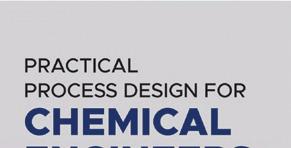

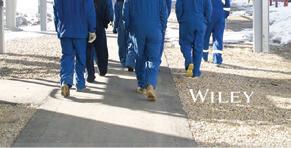

Practical Process Design for Chemical Engineers, by Keith Marchildon and David Mody, 2025: This book is about chemical process design that blends foundational theory with modern technologies and sustainable practices. It offers practical strategies for designing, optimizing and managing chemical systems across many industrial applications.
Artificial Intelligence Technologies for Engineering Applications, edited by G. Sucharitha, Anjanna Matta, M. Srinivas and Sachi Nandan Mohanty, 2025: This book explores how artificial intelligence supports engineering design, optimization and systems control. It includes real-world case studies and applications across aerospace, manufacturing and automotive.
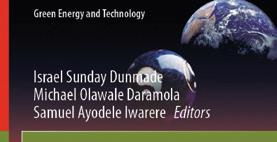

AUGUST 20–21
Montreal | International Conference on Industrial Chemistry and Engineering, https://iaarresearch.com/conf/index. php?id=3078480
AUGUST 29–30
Toronto | International Conference on Engineering https://www.itar.in/conf/index. php?id=3078660
SEPTEMBER 10–11
Toronto | International Conference on Applied Interdisciplinary Civil Engineering https://asar.net.in/event/index. php?id=3090705
SEPTEMBER 11
Edmonton | International Conference on Maritime Technology and Engineering https://casrp.org/Conference/3340/ICMTE
The Pragmatic Engineer
Hosted by Gergely Orosz, this podcast is about realworld software engineering lessons from Big Tech and startups, focusing on practical strategies and lessons for both engineers and managers of engineers. newsletter. pragmaticengineer.com/podcast


The Structural Engineering Channel
This podcast features key developments and career paths in structural engineering through interviews with industry professionals and experts. https://engineeringmanagement institute.org/tsec-podcast
Stanford Engineering’s The Future of Engineering
This podcast explores developments in science and engineering, from AI to health and sustainability, while examining their societal and ethical impacts. https://engineering.stanford.edu/news/ collection/future-everything-podcast


Sustainable Engineering: Concepts and Practices edited by Israel Sunday Dunmade, Michael
Sustainable Engineering: Concepts and Practices, edited by Israel Sunday Dunmade, Michael Olawale Daramola and Samuel Ayodele Iwarere, 2025: This book examines how engineering practices can support sustainable development across sectors. With perspectives from academia, government and industry, it presents strategies for designing and managing systems in ways that are environmentally sound, socially responsible and economically viable.
SEPTEMBER 22–23
Toronto | International Conference on Aerospace and Aviation Engineering https://researchplus.co/event/index. php?id=3171792
OCTOBER 10–11
Toronto | International Conference on Standards for Engineering and Management https://www.wrfconference.com/event/ index.php?id=3187987
OCTOBER 14–16
Windsor | 2nd IEOM World Congress on Industrial Engineering and Operations Management https://ieomsociety.org/canada2025/
Applied Science
This YouTube channel explores handson experiments and hi-tech builds that combine electromechanical systems, electronics and chemistry. www.youtube.com/channel/UCivA7_ KLKWo43tFcCkFvydw
Smart Manufacturing Engineering
This YouTube channel presents insights from the front lines of advanced manufacturing. Keep up to date with the industry through topics like additive processes and robotics. www.youtube.com/@SMEMedia
In the matter of a hearing under the Professional Engineers Act, R.S.O. 1990, c. P.28; and in the matter of a complaint regarding the conduct of BING HUNG EDWARD WONG, P.ENG., a member of the Association of Professional Engineers of Ontario, and EDWARD WONG & ASSOCIATES INC., a holder of a Certificate of Authorization.
1. The Panel of the Discipline Committee met to hear this matter on April 7, 2025, by means of an online video conference platform that was open to observers. All participants in the proceedings attended via videoconference, including counsel for the Association of Professional Engineers of Ontario (“PEO”), Mr. Bing Hung Edward Wong, P.Eng. (“Wong”), and legal counsel for Wong and Edward Wong & Associates Inc. (“EWAI”).
2. The Panel was provided with a Notice of Hearing dated February 13, 2025, including a Statement of Allegations dated August 20, 2024.
3. The Panel notes that the allegation contained in paragraph 14(c) of the Statement of Allegations (Failing to sign, date or seal an engineering document in contravention of section 53, under section 72(2)(e) of Regulation 941) was withdrawn by PEO during the course of the hearing.
4. Counsel for PEO advised the Panel that the parties had reached agreement on the facts and introduced an Agreed Statement of Facts signed by Wong and EWAI on March 28, 2025, and countersigned by counsel for PEO on March 31, 2025. The Agreed Statement of Facts provided as follows, with schedules omitted:
1. At all material times, Wong was a professional engineer licenced pursuant to the Act. Wong was first licenced in 1989 and has practiced continuously as a professional engineer since that time. He has not previously been referred to the Discipline Committee.
2. At all material times, EWAI held a Certificate of Authorization (“C of A”) naming Wong as the individual accepting professional responsibility for engineering services provided under the C of A. EWAI has not previously been referred to the Discipline Committee.
3. On or around July 6, 2022, Como Demolition and Excavation (“CDE”) retained Wong and/or EWAI to complete work relating to soil excavation from a residential construction site at 6 Bluejay Place, Toronto, Ontario (the “Site”). In particular, Wong and/or EWAI were retained to obtain soil samples, arrange for chemical testing of the samples, and provide a report on the results of the testing.
4. On or around July 6, 2022, Wong attended the Site and collected four soil samples: BJP1, BJP2, BJP3 and BJP4. Wong submitted the samples to Bureau Veritas Laboratories (“BVL”) for testing.
5. On or around July 15, 2022, BVL issued a soil chemical certificate of analysis reporting on the results of testing conducted on samples BJP1, BJP2, BJP3 and BJP4 (“BVL Report 1”). BVL Report 1 indicated that an “exceedance of acid extractable arsenic levels” were noted for samples BJP3 and BJP4. Attached hereto as Schedule “A” is a copy of BVL Report 1.
6. On or around July 22, 2022, Wong re-attended the Site at CDE’s request to take new samples from a different location within the excavation boundary. Wong took samples BP3 and BP4 from soil extracted by a backhoe from within the excavation zone. Samples BP3 and BP4 were taken at a different location and a different depth than samples BJP3 and BJP4.
7. During his site visits, Wong did not take photos, nor did he take field measurements or complete horizontal or vertical surveying for the sampling locations.
8. Wong provided samples BP3 and BP4 to BVL for testing. On or around August 3, 2022, BVL issued a soil chemical certificate of analysis to EWAI reporting the results of test ing on BP3 and BP4 (“BVL Report 2”). There was no excessive arsenic noted for these samples.
9. On or around August 4, 2022, at Wong’s request, BVL issued another certificate of analysis for samples BJP1 and BJP2, without also reporting the results from BJP3 and BJP4 (“BVL Report 3”).
10. On or around August 4, 2022, EWAI issued a report signed by Wong entitled “Results of Chemical Analysis, 6 Blue Jay Place, Toronto, Ontario” (the “EWAI Report”). Attached hereto as Schedule “B” is a copy of the EWAI Report.
11. The EWAI Report was deficient in that it:
a. Failed to address samples BJP3 and BJP4 or provide a rationale for excluding the test results for BJP3 and BJP4;
b. Failed to include the locations where samples BJP3 and BJP4 were taken; and
c. Failed to include any test pit or sample logs providing a description of the soil tested.
12. Appended to the EWAI Report was a copy of BVL Report 2. Soil samples BJP3 and BJP4 were crossed off the list of analysed samples.
13. CDE provided the EWAI Report to Carolyn Adams, P.Eng. (“Adams”), Environmental Director of United Soils Management, in support of CDE’s request to dispose of excess soil from the Site at a United Soils Management location. At all times, Adams had the soil analysis for all the samples taken from the Site. United Soils refused to accept the soil.
14. Adams filed a complaint with PEO on February 3, 2023. Attached as Schedule “C” is a copy of the complaint, exclusive of attachments.
15. PEO retained Grounded Engineering to provide an independent expert opinion. Grounded Engineering provided a report dated March 1, 2024, signed and sealed by Free sia Waxman, M.A.Sc., P.Eng., QP(ESA) and David MacGillivray, P.Geo., QP(ESA/RA) (the“Expert Report”). The Expert Report concluded, among other things, that Wong “failed to be aware of, consider, or comply with the MECP Excess Soil Best Management Practice guidelines or industry standards”, and that the EWAI Report “and all work by Edward Wong and EWAI did not meet the standard of care of a reasonable and prudent engineer in the Province of Ontario”. The Expert Report also states: “It is unlikely that there was a potential public safety impact as a result of Edward Wong and/or EWAI’s failure to comply with industry standard practices” and that BJP3 and BJP4 only indicated “marginal exceedances” of a possibly “naturally occurring” substance in a “relatively small volume of soil”. Attached as Schedule “D” is a redacted copy of the Expert Report.
16. For the purposes of these proceedings, the Respondents accept as correct the findings, opinions and conclusions contained in the Expert Report, as redacted. The Respondents admit that they failed to make responsible provision for complying with applicable standards, and that they failed to maintain the standards that a reasonable and prudent practitioner would maintain in the circumstances with respect to the soil sampling process referred to above and the preparation of the EWAI Report.
17. By reason of the aforesaid, the parties agree that Wong and EWAI are guilty of professional misconduct as follows:
a. Negligence, amounting to professional misconduct, as defined by sections 72(1) and 72(2)(a) of Regulation 941;
b. Failing to make responsible provision for complying with applicable statutes, regulations, standards, codes, by-laws and rules in connection with work being undertaken by or under the responsibility of the practitioner under section 72(2)(d) of Regulation 941;
c. Conduct relevant to the practice of professional engineering that would reasonably be regarded as unprofessional, amounting to professional misconduct as defined by section 72(2)(j) of Regulation 941.
5. On behalf of himself and EWAI, Wong admitted the acts of professional misconduct set out in paragraphs 17(a) to 17(c) of the Agreed Statement of Facts. The Panel conducted a plea inquiry and was satisfied that Wong’s admission was voluntary, informed, and unequivocal.
6. The Panel considered the Agreed Statement of Facts and finds that the facts, as agreed, support findings of professional misconduct. In particular, it finds that Wong and EWAI committed acts of professional misconduct as set out in paragraphs 17(a) to 17(c) of the Agreed Statement of Facts, above.
7. When presented with a guilty plea and an Agreed Statement of Facts, the Panel must still satisfy itself whether the facts presented support a finding with respect to each of the acts of professional misconduct alleged by PEO.
8. In this case, the Panel is of the view that the allegations of professional misconduct admitted to in paragraphs 17(a) to 17(c) of the Agreed Statement of Facts were clearly made out on the facts agreed to by Wong and EWAI and accepted by the Panel.
9. With respect to the allegation that Wong and EWAI were negligent, the Panel notes that subsection 72(1) of the Regulation defines negligence as “an act or omission in the carrying out of the work of a practitioner that constitutes a failure to maintain the standards that a reasonable and prudent practitioner would maintain in the circumstances.”
10. The Panel accepts the conclusions of the Expert Report provided by Grounded Engineering that Wong and EWAI “did not meet the standard of care of a reasonable and prudent engineer in the Province of Ontario” with respect to the soil sampling process and the preparation of their report in this case. Specifically, the Panel notes that Wong and EWAI failed to address in their report two samples that showed elevated levels of arsenic, including where the samples were taken, or to provide a rationale for why the test results for these samples were excluded from the report. As noted by the Expert Report, “[i]f elevated concentrations of arsenic
were identified at the Site, a prudent engineer would have completed subsequent sampling at the same elevation to horizontally delineate any elevated arsenic concentrations within the surficial soil that may have extended into the area of elevation.” Such additional investigations would have been documented and explained as part of the final report.
11. Moreover, as noted by the Expert Report, Wong and EWAI failed to include any test pit or sample logs providing a description of the soil tested, which would be expected of a prudent engineer in this type of soil sampling process.
12. Regarding the allegation that Wong and EWAI failed to make responsible provision for complying with applicable statutes, regulations, standards, codes, bylaws and rules, the Panel accepts the conclusions of the Expert Report that Wong and EWAI failed to “be aware of, consider, or comply with the MECP [Ministry of Environment, Conservation and Parks] Excess Soil Best Management Practice guidelines or industry standards.” In particular, the Panel notes that these guidelines state that all past environmental site assessment information should be made available upon request, but as noted above, the results of the two samples were not addressed in Wong and EWAI’s report. Moreover, Wong and EWAI did not take actions in accordance with expected industry standards to delineate the scope of the arsenic or to appropriately log the locations of the samples taken.
13. Finally, the Panel accepts that all of the above deficiencies with respect to Wong and EWAI’s conduct of the soil sampling project and their final report supports a conclusion that their conduct would be regarded as unprofessional by members of the engineering profession.
14. Counsel for PEO advised the Panel that a Joint Submission as to Penalty and Costs had been agreed upon. The Joint Submission as to Penalty and Costs provided, in part, as follows:
3. The PEO, Wong and EWAI make the following joint submissions on penalty and costs:
a) Pursuant to s. 28(4)(f) of the Act, Wong and EWAI shall both be reprimanded, and the fact of the reprimand shall be recorded on the Register for an unlimited period of time;
b) Pursuant to section 28(4)(b) of the Act, Wong’s licence and EWAI’s certificate of authorization shall both be suspended for a period of one (1) week, commencing upon pronouncement of the Discipline Committee’s penalty decision (the “Date”);
c) Pursuant to s. 28(4)(d) of the Act, the following terms and conditions shall be placed on Wong’s licence and EWAI’s certificate of authorization:
(i) Wong shall successfully complete the National Professional Practice examination (the “NPPE”) within six (6) months after the Date; and
(ii) Wong shall successfully complete the Geotechnical & Hydrogeological Engineering (18-Env-A3/07-WRSE-A3) exam (the “GHE Exam”), within twelve (12) months after the Date;
d) Pursuant to s. 28(4)(e) and (k) of the Act, a restriction shall be imposed upon Wong’s licence and EWAI’s certificate of authorization prohibiting Wong from practicing professional engineering except under the direct supervision of another professional engineer acceptable to the Registrar, who shall take professional responsibility for the work by affixing his or her signature and seal on every final drawing, report, or other document prepared or sealed by Wong, which restriction shall be suspended for the period set out in subsection (c)(i) in the case of the NPPE, and the period set out in (c)(ii) in the case of the GHE Exam. Upon successful completion of the NPPE, the restriction in connection with that examination shall be lifted. Upon successful completion of the GHE Exam, the restriction in connection with that examination shall be lifted;
e) Pursuant to s. 28(4)(i) and 28(5) of the Act, the findings and order of the Discipline Committee shall be published, with reference to names; and
f) There shall be no order with respect to costs.
15. Counsel for PEO submitted that the Panel had jurisdiction to order all of the elements of the proposed penalty and that it served all of the principles and objectives of penalty orders. In particular, counsel for PEO submitted the following:
• The reprimand and publication of the Panel’s decision with reference to names served as both a general and specific deterrent, as well as helped to maintain the public’s confidence in the regulation of the profession;
• The suspension of Wong’s licence and EWAI’s Certificate of Authorization served to protect the public and acted as both a general and specific deterrent; and
• The requirement to complete two examinations served a remedial purpose and protected the public, and that this was supported by the requirement for oversight by another professional engineer should the required exams not be completed within the specified timeframes. Counsel for PEO referred to previous cases in which a suspended imposition of practice oversight had been ordered; he submitted that this type of order was within the Panel’s jurisdiction.
16. Counsel for PEO referred the Panel to two cases of the Discipline Committee (PEO v. De Rose dated March 19, 2014; PEO v. Vickerman dated February 29, 2024), which he submitted resulted in similar outcomes. He argued that the proposed penalty was therefore with a reasonable range of penalties imposed in similar, if not identical, circumstances.
17. Counsel for Wong and EWAI submitted that they did not challenge that their report fell below industry standards in the manner alleged. However, counsel asserted that there was no evidence before the Panel to conclude that Wong or EWAI had in any way misled or attempted to deceive the potential soil receiving site. He described the deficiencies in the report as the result of a technical error, rather than any duplicity or ethical concerns. He further pointed out that the Expert Report concluded that there had been no risk to public safety as a result of the deficiencies.
18. The Panel accepts the Joint Submission as to Penalty and Costs and orders as follows:
1. Pursuant to s. 28(4)(f) of the Act, Wong and EWAI shall both be reprimanded, and the fact of the reprimand shall be recorded on the Register for an unlimited period of time;
2. Pursuant to s. 28(4)(b) of the Act, Wong’s licence and EWAI’s certificate of authorization shall both be suspended for a period of one (1) week, commencing upon pronouncement of the Discipline Committee’s penalty decision (the “Date”);
3. Pursuant to s. 28(4)(d) of the Act, the following terms and conditions shall be placed on Wong’s licence and EWAI’s certificate of authorization:
a. Wong shall successfully complete the National Professional Practice examination (the “NPPE”) within six (6) months after the Date; and
b. Wong shall successfully complete the Geotechnical & Hydrogeological Engineering (18-Env-A3/07-WRSE-A3) exam (the “GHE Exam”), within twelve (12) months after the Date;
4. Pursuant to s. 28(4)(e) and (k) of the Act, a restriction shall be imposed upon Wong’s
licence and EWAI’s certificate of authorization prohibiting Wong from practising professional engineering except under the direct supervision of another professional engineer acceptable to the Registrar, who shall take professional responsibility for the work by affixing his or her signature and seal on every final drawing, report, or other document prepared or sealed by Wong, which restriction shall be suspended for the period set out in subsection (c)(i) in the case of the NPPE, and the period set out in (c)(ii) in the case of the GHE Exam. Upon successful completion of the NPPE, the restriction in connection with that examination shall be lifted. Upon successful completion of the GHE Exam, the restriction in connection with that examination shall be lifted; and
5. Pursuant to s. 28(4)(i) and 28(5) of the Act, the findings and order of the Discipline Committee shall be published, with reference to names.
19. The Panel carefully considered the Joint Submission on Penalty and Costs. It is a well-established principle of law that a disciplinary panel should not interfere with a joint submission on penalty except where the panel is of the view that to accept the joint submission would bring the administration of the disciplinary process into disrepute or otherwise be contrary to the public interest (Bradley v. Ontario College of Teachers, 2021 ONSC 2303).
20. The Panel is satisfied that the penalty protects the public and serves the principles of general and specific deterrence, rehabilitation, and maintenance of the public’s confidence in the profession.
21. Delivering a reprimand and publishing the Panel’s findings with reference to names deters both Wong and EWAI from reoffending and the profession as a whole from engaging in similar conduct. The imposition of a suspension likewise supports these aims.
22. The requirement to complete two examinations targeted to the circumstances of this case support remediation and rehabilitation. The Panel is satisfied that the examinations will provide Wong with an opportunity to reflect on his misconduct, and impress upon him the importance of complying with applicable standards and guidelines in his future practice. Further, imposing a requirement of supervision on Wong and EWAI, but suspending the coming into force of that penalty unless Wong is unsuccessful at completing the examinations within the prescribed timeframes, acts as an additional safeguard for the public.
23. The Panel notes that Wong and EWAI’s co-operation with PEO through the Agreed Statement of Facts and Joint Submission on Penalty demonstrates that he has accepted responsibility for his actions and has avoided unnecessary expense to PEO for a contested hearing. The Panel considers this evidence of Wong’s insight and his steps towards rehabilitation, which will be supplemented by the requirement that he complete the two specified examinations. These examinations will provide an opportunity for Wong to upgrade his skills and to demonstrate that his practice aligns with the standards of the profession.
24. The Panel considered it a mitigating factor that the levels of arsenic in the two impugned samples showed only marginal exceedances of prescribed limits, may have been attributable to a naturally occurring source, and ultimately posed no risk to the public.
25. The Panel also points out that in reviewing the proposed penalty, it took into consideration that there was no evidence or admissions before it to suggest that the arsenic findings were being deliberately withheld for an improper purpose. Had there been evidence before the Panel of deception or unethical conduct, its views on the adequacy of the penalty may have been different.
Eric Bruce signed this Decision and Reasons for the decision as Chair of this Discipline Panel and on behalf of the members of the Discipline panel: Jag Mohan, P.Eng., and Michael Rosenblitt, P.Eng.
In the matter of a complaint regarding the actions and conduct of Robert J. Ward, P.Eng. (“Ward”), a member of the Association of Professional Engineers of Ontario, and Ward & Burk Microtunnelling Ltd. (“W&B Micro”), a holder of a Certificate of Authorization (“C of A”) .
The complaint concerns the actions and conduct of Ward and W&B Micro in the design and construction of upgrades to an industrial property located in the Town of East Gwillimbury, Ontario (the “site”). The CBO complained that work was not done to codes/standards and was done without a Site Plan Approval and Building Permit.
In or about 2019, W&B Micro purchased the site to facilitate storage of their micro tunnelling equipment. W&B Micro undertook to correct numerous deficiencies with the site that did not comply with local bylaws, including storm water management, boundary walls, site screening, structural issues with the main storage building, Gantry Crane, and outdoor storage areas.
In or about August 2021, the Town of East Gwillimbury (the “Town”) observed construction at the site without the required building permits in place and advised W&B Micro that they must obtain building permits for the work.
After several reportedly incomplete building permit applications by W&B Micro, the Town issued an Order to Comply (“Order”), including a deadline by which to obtain the required permits for all work completed, any temporary structures and work under construction. Drawings
associated with the incomplete building permit applications were sealed and signed by Ward, including stormwater calculations.
Following W&B Micro’s failure to comply with the Order while continuing with construction, the Town issued a Stop Work Order. In or about June and July 2022, further inspections by the Town revealed that construction had continued in contravention of the Stop Work Order.
In or about July 2022, two additional Orders to Comply were issued by the Town. However, continued inspections throughout July to November 2022 revealed that construction had continued in contravention of the Stop Work Order.
On or about June 23, 2023, W&B Micro pled guilty before the Ontario Superior Court to charges of failure to comply with a Stop Work Order and were fined $75,000. W&B Micro subsequently paid the fine.
1. The complaint raised issues concerning the actions and conduct of Ward and W&B Micro, including allowing site construction to proceed, according to Ward’s design, without the benefit of a building permit issued by the Town under the Building Code Act , ignoring Orders to Comply and Stop Work Orders, and appearing to practise outside their area of training/competence.
2. The Complaints Committee (“Committee”) received a response to the complaint from Ward and W&B Micro, via counsel, which included several explanations and clarifications relating to Ward’s actions, knowledge and the intended scope of work for the site.
3. The Committee considered the complaint on November 2, 2023, February 1, 2024, May 9, 2024, and August 20, 2024.
4. The Committee was concerned with the professional conduct of Ward and W&B Micro in not following recognized administrative processes in failing to ensure the proper site development permits were in place before beginning construction, continuing with construction without a permit and continuing to conduct work in contravention of a Stop Work Order.
5. In recognition that Ward and W&B Micro had been fined in court for their behaviour and subsequently paid their fine, the Committee considered whether a referral to the Discipline Committee was warranted in all the circumstances and whether it was in the interest of the public and the profession to proceed with the matter.
6. The Committee decided that if the issues raised by the complaint were addressed through a voluntary undertaking, as well as the publication of a summary of this matter, the public interest issues raised by the complaint would be addressed.
7. The Committee decided that Ward and W&B Micro should be given the opportunity to provide a voluntary undertaking that would include:
a. A written apology to the Town and the Chief Building Official for ignoring important administrative aspects of the OBC and municipal bylaws and otherwise harming the reputation of municipal officials by their actions;
b. Establish written procedures to ensure all required permits and regulatory approvals are obtained before work commences on any active W&B Micro project;
c. Establish written procedures within W&B Micro to ensure the following:
• That application for permits and other similar regulated approval requirements are complete and in accordance with the requirements of the OBC, municipal bylaws and procedures, and follow
PEO’s Structural Engineering Design Services for Buildings Guideline, June 2017, where applicable;
• That Ward follow PEO’s Use of the Professional Engineer’s Seal guideline, March 2022, and that he only seal drawings that Ward has the appropriate training and experience with;
• That Ward commit to retain professionals experienced in those areas he is unfamiliar with;
d. Establish a Quality Assurance process internally with documented checks and balances to ensure similar administrative mistakes are not repeated as noted above; and
e. The voluntary undertaking and a summary of the matter would be published with names in the official publication of the Association (the Gazette).
Ward and W&B Micro voluntarily agreed to undertake all the actions listed above and subsequently provided all requested documentation and completed all required actions as outlined above.
The voluntary undertaking described above was accepted by the Committee as a dispositive measure, and pursuant to its powers under section 24(2)(c) of the Professional Engineers Act, the Committee decided that this matter would not be referred to the Discipline Committee.
In the matter of a complaint regarding the actions and conduct of Emad F. H. Assaad, P.Eng. (“Assaad”), a member of the Association of Professional Engineers of Ontario, and 1885219 Ontario Inc. o/a ASPA Engineering & Welding Solutions (“ASPA”), a holder of a Certificate of Authorization.
1. The complaint relates to the involvement of Assaad and ASPA in a construction project involving inspection of a one-storey addition completed with a basement at a Single-Family Dwelling (“SFD”). The general contractor for the project retained ASPA to inspect the construction and report whether it was in general conformance with the permit drawings and applicable codes and standards. ASPA did not prepare the permit drawings.
2. At all material times, ASPA held a Certificate of Authorization (“C of A”) naming Assaad as the individual accepting professional responsibility for engineering services provided under the C of A.
3. ASPA issued two letters signed and sealed by Assaad confirming that the structural elements, including framing and foundation and the insulation and the heating rough-in, were constructed “in general conformance to the approved permit drawings and specifications, including any amendments thereto.” There was no record of Assaad signing a commitment to general review form for this project.
4. According to Assaad, he conducted other site visits, but he did not recall their dates because they were scheduled at the last minute and because he did not record them.
5. The complaint raised concerns regarding ASPA’s presence on site and accuracy and timing of issued letters. The complainant alleged that Assaad may have backdated the letters.
6. The Complaints Committee (“Committee”) received a response to the complaint from ASPA and Assaad specifying ASPA’s scope of work and presence on site to conduct inspections. Assaad further noted that he rarely takes photographs on site and does not record site visit dates. Assaad added that he would typically delete his project emails every six months.
7. The Committee received a third-party engineering report concluding that components of the constructed addition do not conform to the requirements of the Ontario Building Code and were deficient.
8. The Committee received an additional response from Assaad through his legal counsel denying the issuance of fraudulent documents and an incompetent review. The response added that Assaad did not plan to practise outside steel connection review going forward.
9. The Committee considered the complaint at its meetings on October 18, 2022, February 6, 2023, and December 4, 2023. The Committee considered the responses received and carefully considered the issues raised in this matter.
10. The Committee had concerns that Assaad did not have complete records of when he visited the site and did not take photographs while on site for the project. The Committee further had concerns with respect to ASPA’s document retention policy and Assaad’s declaration that he deleted project emails every six months. In the Committee’s view, this was an indication of poor record keeping not expected of a reasonable and prudent practitioner. The Committee acknowledged that the third-party engineering report did not suggest that the deficiencies in the construction were a risk to the life, health or property of the homeowners.
11. The Committee considered whether a referral to the Discipline Committee was warranted in all the circumstances, and whether it was in the interest of the public and the profession to proceed with the matter. The Committee decided that if the issues raised in the complaint were addressed through certain proactive remedial efforts on the part of the member and holder, as well as publication of a summary of this matter, the public-interest issues raised by the complaint would be addressed.
12. Assaad and ASPA voluntarily undertook to:
a. Develop a policy to ensure that written agreements are in place for all projects;
b. Diligently review and understand PEO guidelines, including Guideline for Professional Engineers Providing General Review of Construction and Professional Engineering Practice;
c. Develop a policy to only report on such items that were reviewed by Assaad or a suitable qualified individual acting under Assaad’s direct supervision;
d. Rely only on his own time-stamped pictures, if practicable; or clearly state in all reports where and to what extent a report’s findings are based on, or have utilized, the review of photographs provided by others rather than by direct personal observation;
e. Create a list of itemized areas of interest/inspection to be presented and signed by the client prior to any site visits. These lists will include the date, time and scope of all visits. Only items that are in place and completely installed and finalized will be inspected and reported; and
f. Implement a written document retention policy that includes electronic documents such as email, in accordance with applicable laws and regulations.
13. Further, Assaad and ASPA voluntarily agreed that a summary of this matter and the voluntary undertaking would be published in PEO’s Gazette with reference to names.
14. The Committee further noted that Assaad and ASPA were the subjects of a Discipline Committee proceeding on a separate matter and had been found guilty of professional misconduct. The Committee noted that penalties imposed on Assaad’s and ASPA’s licence as a result of that matter had since limited ASPA’s practice and thus ASPA was restricted from providing the type of engineering services offered in the project in the future.
15. The voluntary undertakings described above were accepted by the Committee as a dispositive measure, and pursuant to its powers under section 24(2)(c) of the Act, the Committee decided that this matter would not be referred to the Discipline Committee.
I grew as a leader. Giving back feels good.
Mentoring? Count me in! We have fun! It’s how I stay connected.
With a renewed focus on volunteer engagement, PEO is investing in a stronger, more connected chapter network to better serve licence holders and the public. BY ANGELA FRANGOS
What began as a simple desire to give back has transformed into a passionate commitment to the engineering profession. For Lindsay Keats, P.Eng., volunteering with PEO’s North Bay Chapter isn’t just service—it’s a calling. With 16 years of dedication under her belt and her current role as the chapter’s past chair, Keats has become a vital link in the network connecting licence holders and engineering interns (EITs) to PEO.
“Chapters act as a lifeline,” Keats explains. “We’re the boots on the ground for any questions people may have, and we are able to quickly pass on information when it’s first released [from PEO].”
Celebrating its 65th anniversary this year, PEO’s chapter network was born out of a desire to improve communications between licence holders and PEO Council, and its scope has grown since its founding. Now comprising more than 600 volunteers across five regions and 36 chapters, the network serves as
the local presence of the regulator throughout Ontario, bringing PEO closer to the engineering community and the public it serves.
Chapter volunteers act as ambassadors of PEO’s mission by promoting the value of licensure, fostering a culture of professionalism and reinforcing the responsibilities tied to the P.Eng. designation. Through activities such as licence presentation ceremonies, technical seminars and community events, they help welcome new professionals, facilitate knowledge sharing and foster meaningful connections across the engineering community.
Chapter volunteers act as ambassadors of PEO’s mission by promoting the value of licensure, fostering a culture of professionalism and reinforcing the responsibilities tied to the P.Eng. designation.
“The purpose is presence,” says PEO Chapter Manager Julie Hamilton. As visible representatives in their local regions, chapter volunteers extend the regulator’s reach by engaging with current and future licence holders, guiding aspiring engineers and advocating for the importance of professional standards. In doing so, they not only support entry into the profession but also reinforce its integrity. “A natural byproduct of a chapter’s existence is that they remind and raise awareness of the role and responsibility of professional engineering— among the public, and of equal importance, with current and prospective licence holders,” Hamilton shares.
The impact of the chapter network was clearly demonstrated in 2024, with more than 20,000 people attending chapter-hosted events across the province. This is a strong testament to the value chapters bring to the profession and the public. For Keats, the benefit is tangible: As a member of one of the most active chapters per capita, she has seen firsthand how local engagement fosters connection, visibility and professional pride. “We strive to bring as many events to our members as our volunteers are available to run with a mixture of technical, regulatory, public outreach and of course social events to be able to reach as many of our members as possible,” says Keats.
The role of chapters extends beyond acting as local hubs of engagement. Through the Regional Councillors Committee (RCC), which reports directly to Council, chapters help bridge the gap between the profession’s grassroots and its leadership. Through elected regional councillors who serve on Council, the RCC provides guidance, resources and a channel for two-way communication, ensuring chapter activities align with PEO’s mandate while reflecting the needs of licence holders across the province.
This formal connection also helps chapters align with important PEO initiatives. With the introduction of PEO’s mandatory continuing professional development (CPD) program, PEAK, in 2023, the chapters’ role in supporting professional growth and engagement among licence holders has become even more critical. By creating accessible, locally rooted opportunities for learning and connection, chapters help ensure licence holders remain informed, competent and accountable, which are essential components of effective self-regulation in the public interest.
Arun Dixit, P.Eng., PEO’s vice president of digital transformation and corporate operations, has attended several chapter events and seen first-hand the value chapter events offer attendees. “Chapters offer engineers in their local community a chance to earn their CPD hours by hosting events on topics that are impactful and relevant to them,” Dixit says. Since January 1, 2023, professional engineers and limited licence holders must complete PEO’s CPD
requirement every year to maintain their licence. For practising licence holders, that means finding and participating in learning opportunities that are relevant to their engineering practice. “There is a lot of opportunity for meaningful participation in learning topics that are of value for engineers in the community. The chapters help organize those opportunities,” Dixit adds.
Chapter events, including technical symposiums and seminars, aim to benefit licensed engineers as well as EITs through knowledge sharing, engagement and networking. “We hold events that contribute to PEO’s mandatory CPD program that directly benefit licensed engineers,” says Aiham Adawi, PhD, P.Eng., London Chapter chair. “We also hold several visits to local companies and manufacturers to learn about new technologies and network with employers, which benefit both licensed engineers and EITs as well.”
Another key role for chapters is engaging with PEO’s aspiring and newly licensed engineers. “The pinnacle of all events is of course the P.Eng. certificate presentation ceremony, where new P.Eng. recipients have the pleasure of ‘walking the stage’ to receive their certificates and enjoy this key moment of their careers with family members and fellow engineers,” says Adawi.
Obtaining a P.Eng. is no small feat, and celebrating the career milestone among peers who have been through a similar experience is something new licence holders value. Licence presentation ceremonies are some of Julie Hamilton’s fondest memories working with chapters. “Whether there are two or 52 new P.Engs, it’s a really special event,” Hamilton shares. “Chapter volunteers love welcoming the newest licence holders into the profession. These events highlight the great privilege, responsibility and joy that comes from being a professional engineer.”
In recent years, PEO has focused on reinforcing the connection with its chapter network. The Chapter Office, part of PEO’s broader volunteer engagement department, oversees the coordinated and strategic approach to volunteer support. Since its formation, the department has continued to evolve, expanding its capacity to better assist chapters and enhance the impact of their activities across the province. “The volunteer engagement portfolio is only a year old, and its creation was an intentional move by PEO to ensure volunteers have staff support and to achieve strategic alignment,” says Hamilton.
PEO has made notable changes to support and enhance chapter operations, including collaborating with the finance department to streamline processes and introduce new training webinars for all volunteers. And as part of an effort to improve cohesion and communication, all 36 chapter websites were updated earlier this year (www.peo.on.ca/chapters). “The refreshed chapter websites include a new ‘search by postal code’ feature to find your chapter and a calendar of all PEO chapter events happening across Ontario,” Hamilton shares.
















































































































































































































Another valuable new resource, the Chapter Procedure Manual, was introduced in June to support the operational work chapter volunteers carry out in organizing activities for their community and membership. Developed over the course of one year through close collaboration between staff and volunteers, the manual serves as a guiding North Star for all chapter volunteers. “The manual shares items such as what PEO is and where the chapters fit, what it means to be a chapter volunteer, how chapters help PEO achieve its mandate, what types of activities chapters organize and operational details for acting as a chapter volunteer,” Hamilton adds.
The Chapter Event Engagement Model, launched in 2024 by PEO’s volunteer engagement department, was also designed to strengthen connections between chapters and the regulator. “PEO senior staff are now participating in the Chapter Event Engagement Model to enhance engagement with chapters,” says Hamilton. The model ensures each chapter receives an official staff presentation at a chapter event at least once every three years, supporting ongoing dialogue with licence holders and recognizing the vital role chapters play.
PEO’s efforts have not gone unnoticed. “Seeing the positive impact chapter activities have on our membership and the support we receive from the PEO head office have been my propeller to continue volunteering,” says Adawi. “I feel the sincere appreciation from PEO’s administration to the work of chapters and volunteers, and this has a great impact on volunteers’ willingness to continue.”
Although there is still much work ahead, PEO has made strides to forge a path of collaboration with chapters. “Building on feedback we have received from the chapters, we are strengthening our approach to communication across the network. It includes outreach to chapters in new and dynamic ways, and it’s more timely and frequent communication,” says Dixit. “The chapters are ambassadors of PEO, and they represent the regulator in their local communities. I’d like to share my appreciation for the chapter volunteers who donate their time in support of the work we at PEO do as the regulator of the engineering profession in Ontario.”
Chapters wouldn’t exist without the dedication of PEO’s volunteers, many of whom balance full-time careers in engineering while giving their time to support their peers and the profession. Volunteering is about more than organizing events; it’s a pathway to personal and professional growth. For Lindsay Keats, years of chapter involvement have broadened her perspective and strengthened her leadership skills. “By meeting engineers of various disciplines and working with them at the chapter executive level, or on various committees or in different breakout rooms at PEO events, it has helped me gain an understanding and appreciation for the different points of views the various disciplines have, which helps me be a better team player and leader,” shares Keats.
Her advice to anyone considering volunteering? “Just try it. You have nothing to lose and so much to gain,” Keats says. Fellow volunteer Adawi agrees, adding: “To readers, I say—hop on with us on this exciting journey!”
Whether you’re helping at a single event, stepping into a chapter executive role or just showing up and getting involved, chapter volunteers are at the heart of PEO’s mission and part of a proud legacy of volunteerism. Ready to make a difference in your professional community? Join the network of dedicated volunteers who help shape the future of engineering in Ontario. Learn more at www.peo.on.ca/volunteers. e
Each licence holder and EIT who resides in Ontario is assigned to a chapter based on their residential address. Membership is free. Licence holders and EITs can find out which chapter they are part of by logging into their PEO portal account at secure.peo.on.ca.
To find chapter events taking place in each community, visit www.peo.on.ca/chapters for a full calendar or navigate to the newly designed chapter websites for more.






A key responsibility of PEO’s chapters is to host a wide array of events and activities. Here are some examples of events taking place across the province.







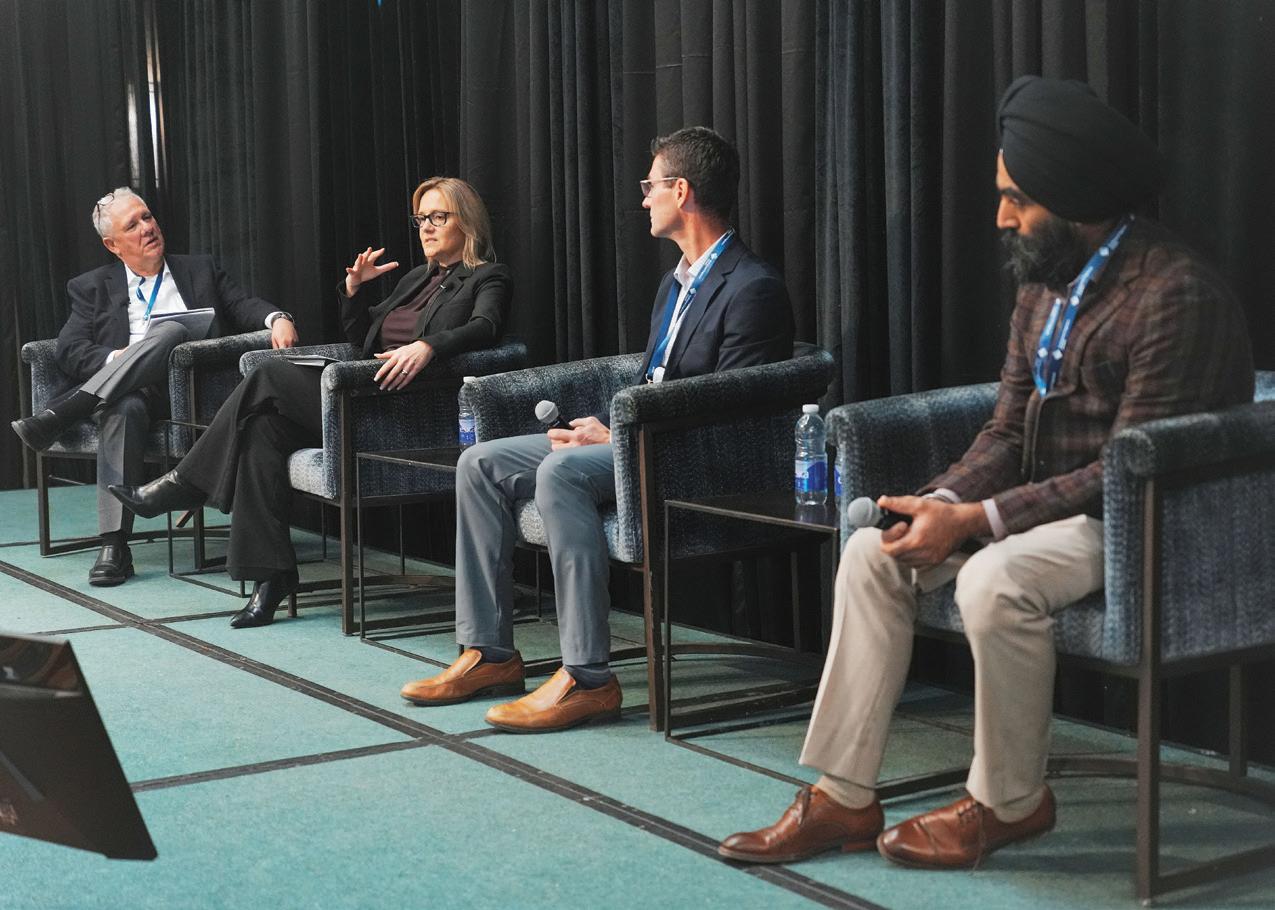




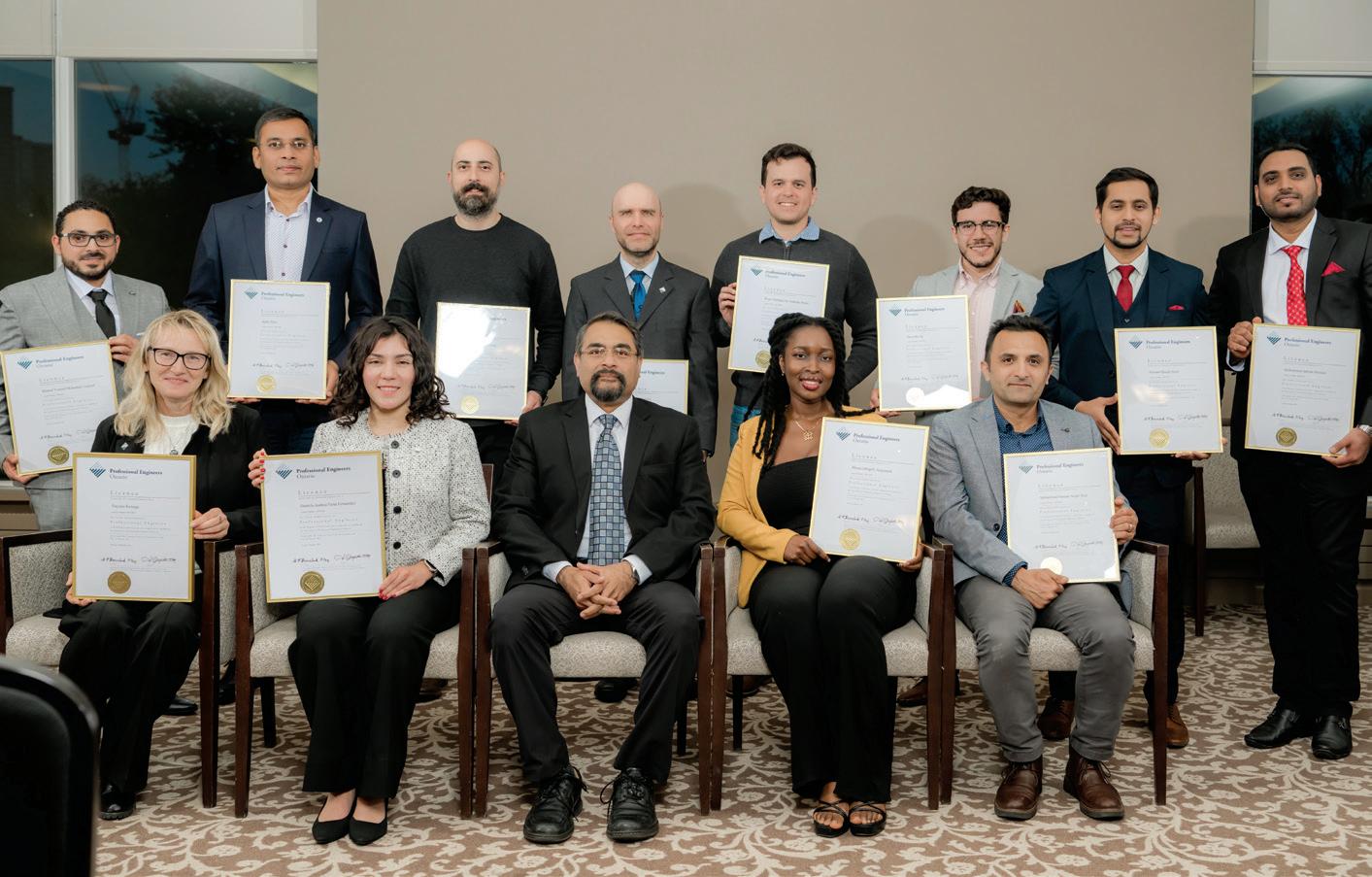
The Toronto-Humber Chapter recognizes new licence recipients at a tri-chapter licence presentation ceremony.


The 2025 West Central Region Chapters Symposium, a day-long technical seminar hosted by six West Central Region chapters, included a transportation infrastructure panel.
From left to right: Gary Williams, P.Eng., president and CEO, IEDG Infrastructure & Energy Inc.; Corina Moore, executive vice president, transportation and infrastructure, WSP; Greg Hardy, P.Eng., PMP, director, engineering services, City of Oshawa; and Darshpreet Bhatti, P.Eng., principal, Stratix Group.

Algoma Chapter members partner with the Ontario Association of Certified Engineering Technicians and Technologists for a “Trunk or Treat” community event for children with autism. From left to right: Gil
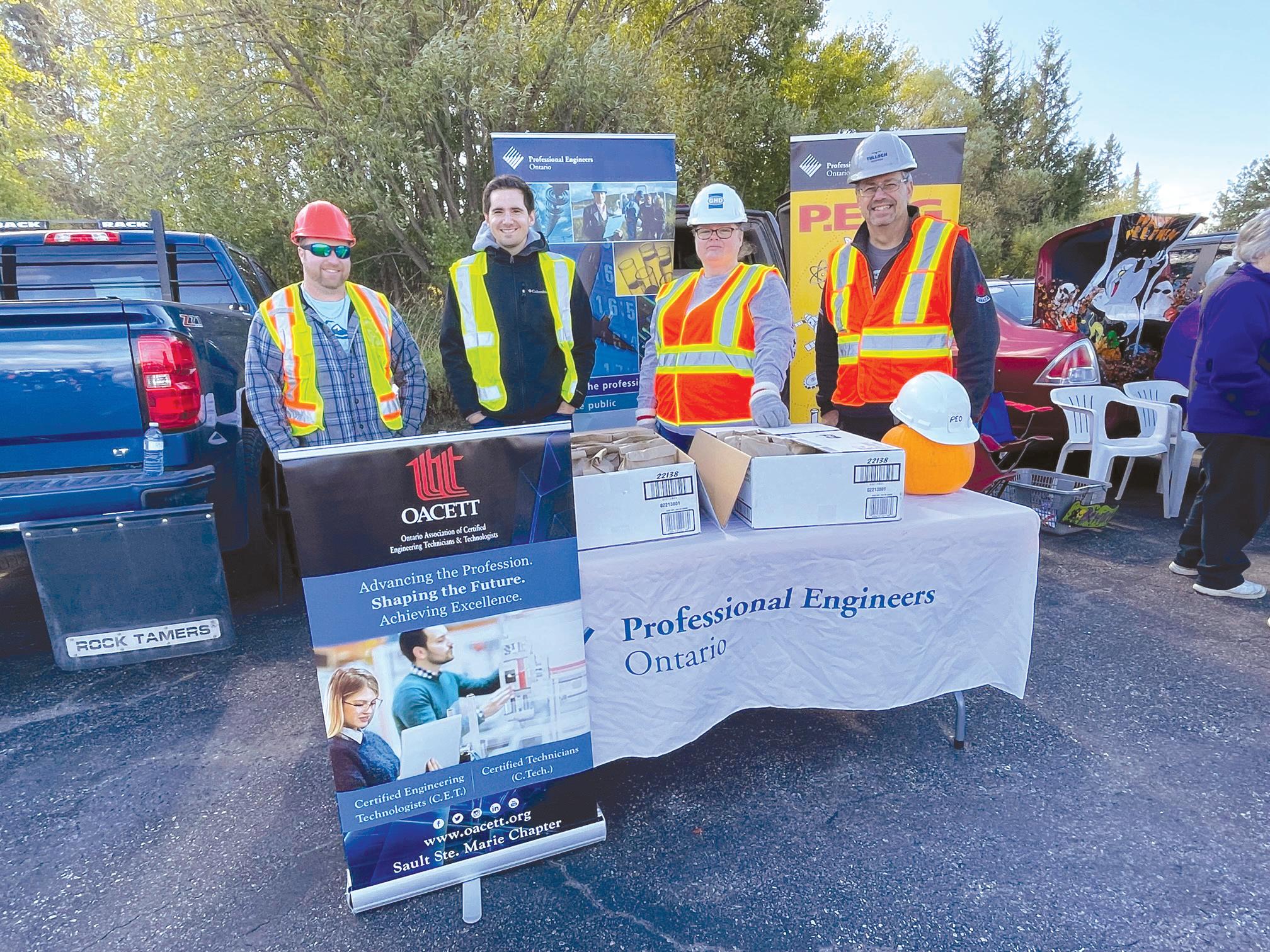
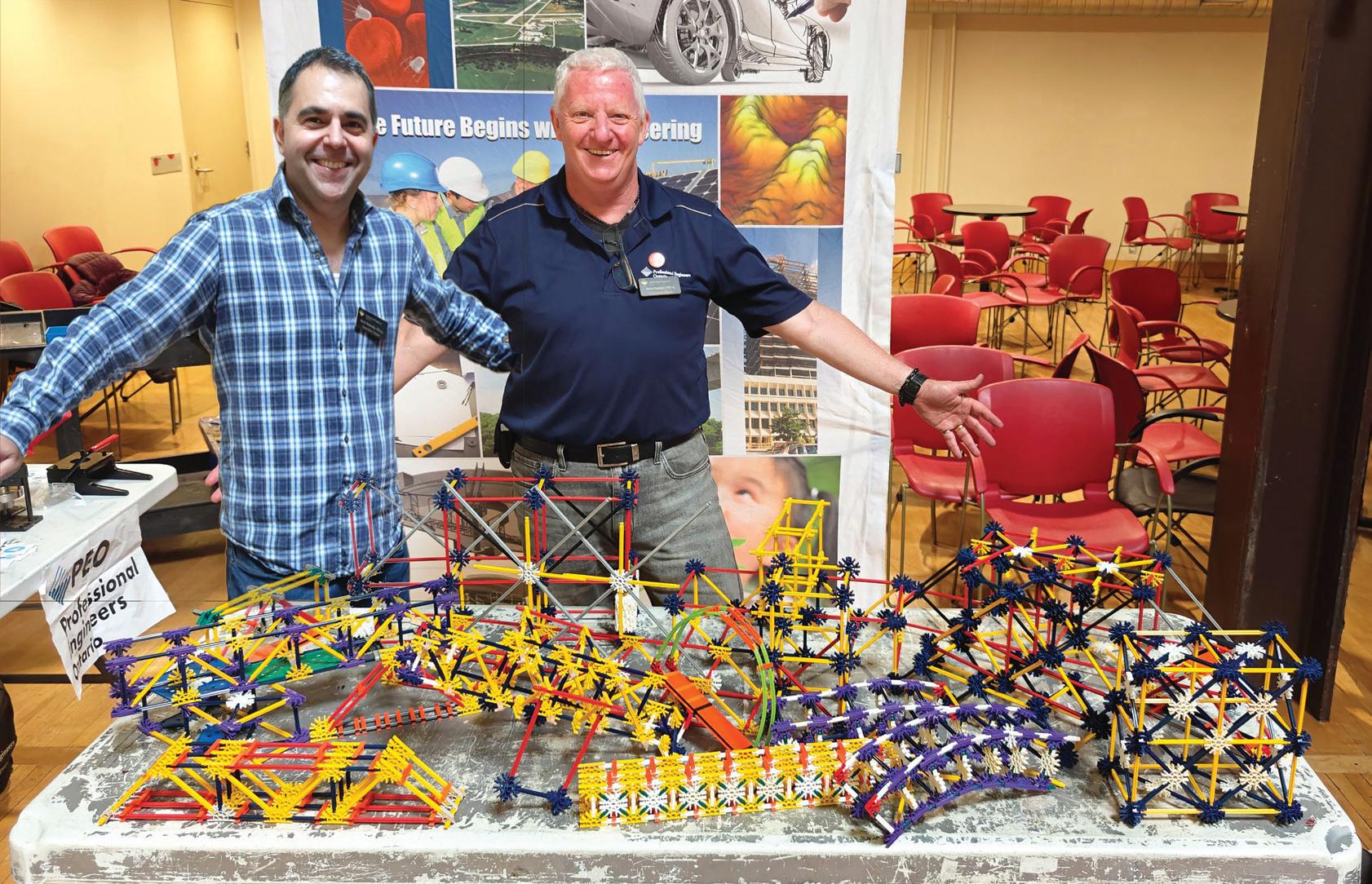
Amir Komeily and Brett Nelson, P.Eng., volunteer at the Grand River Chapter K’nex bridge-building competition.














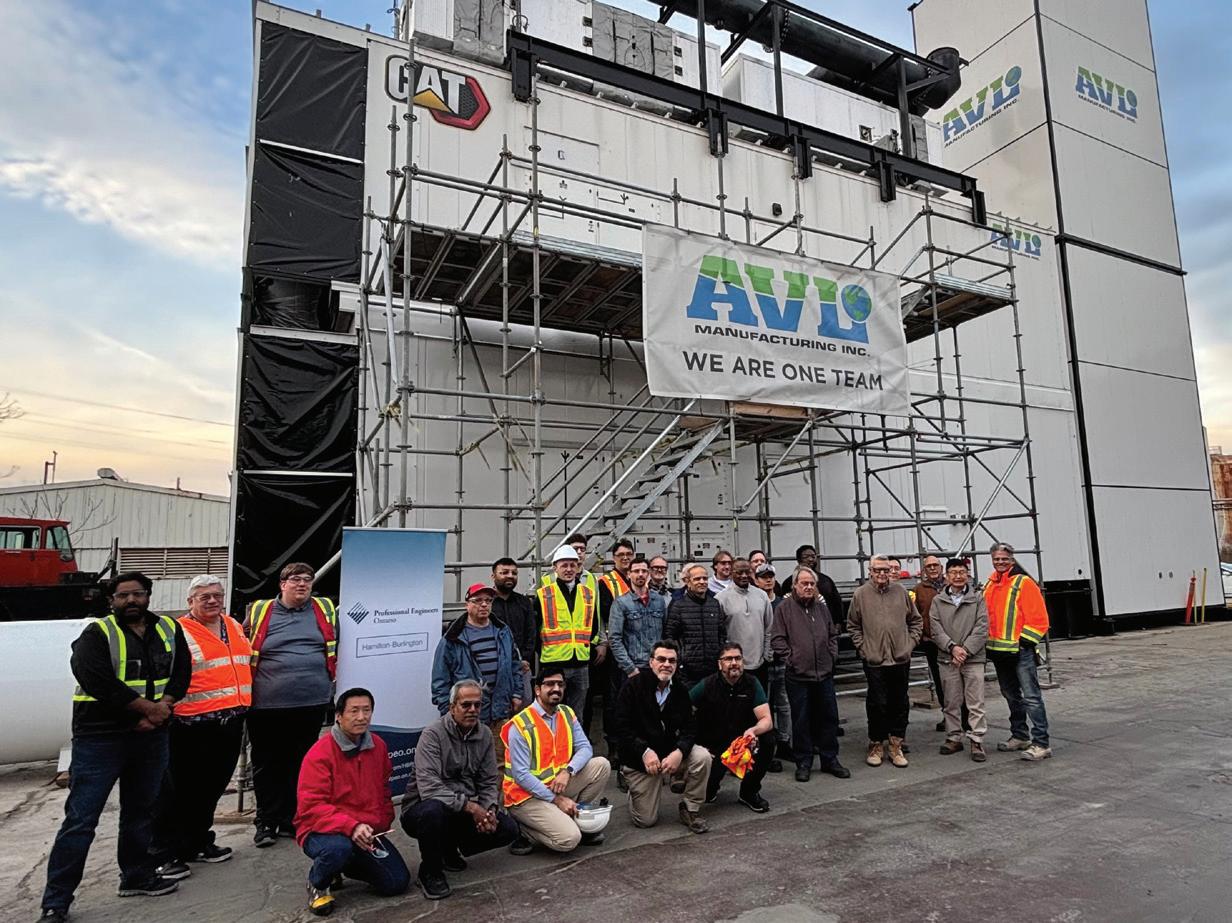
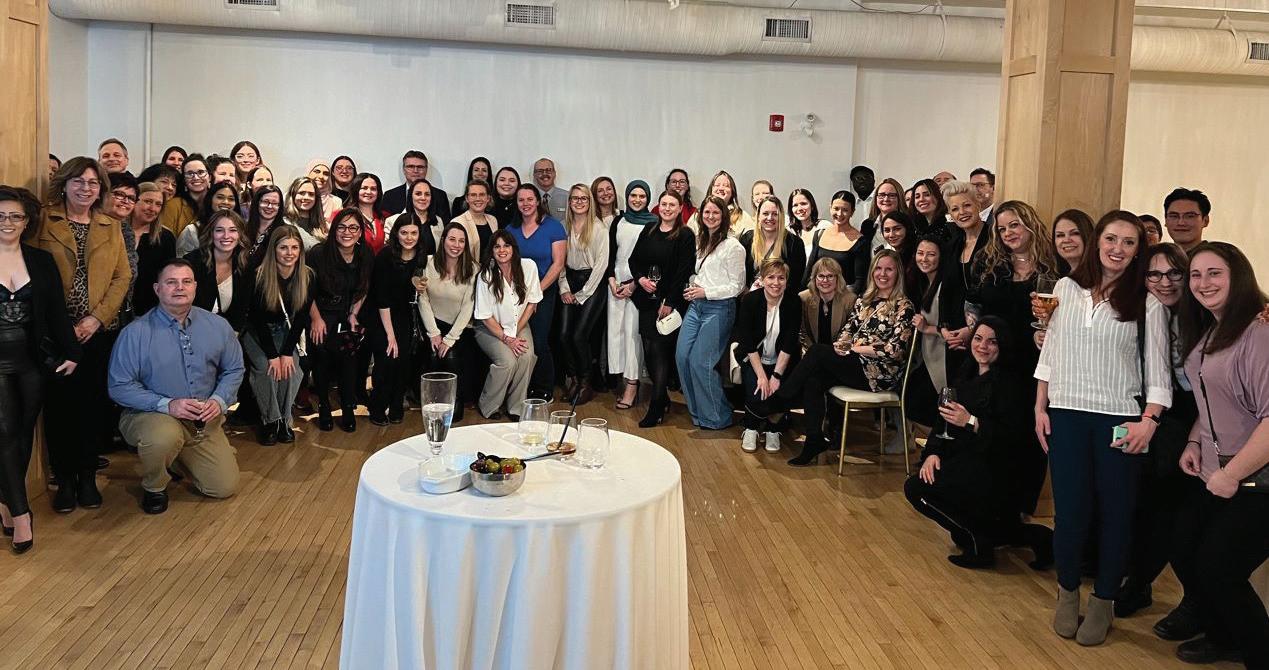



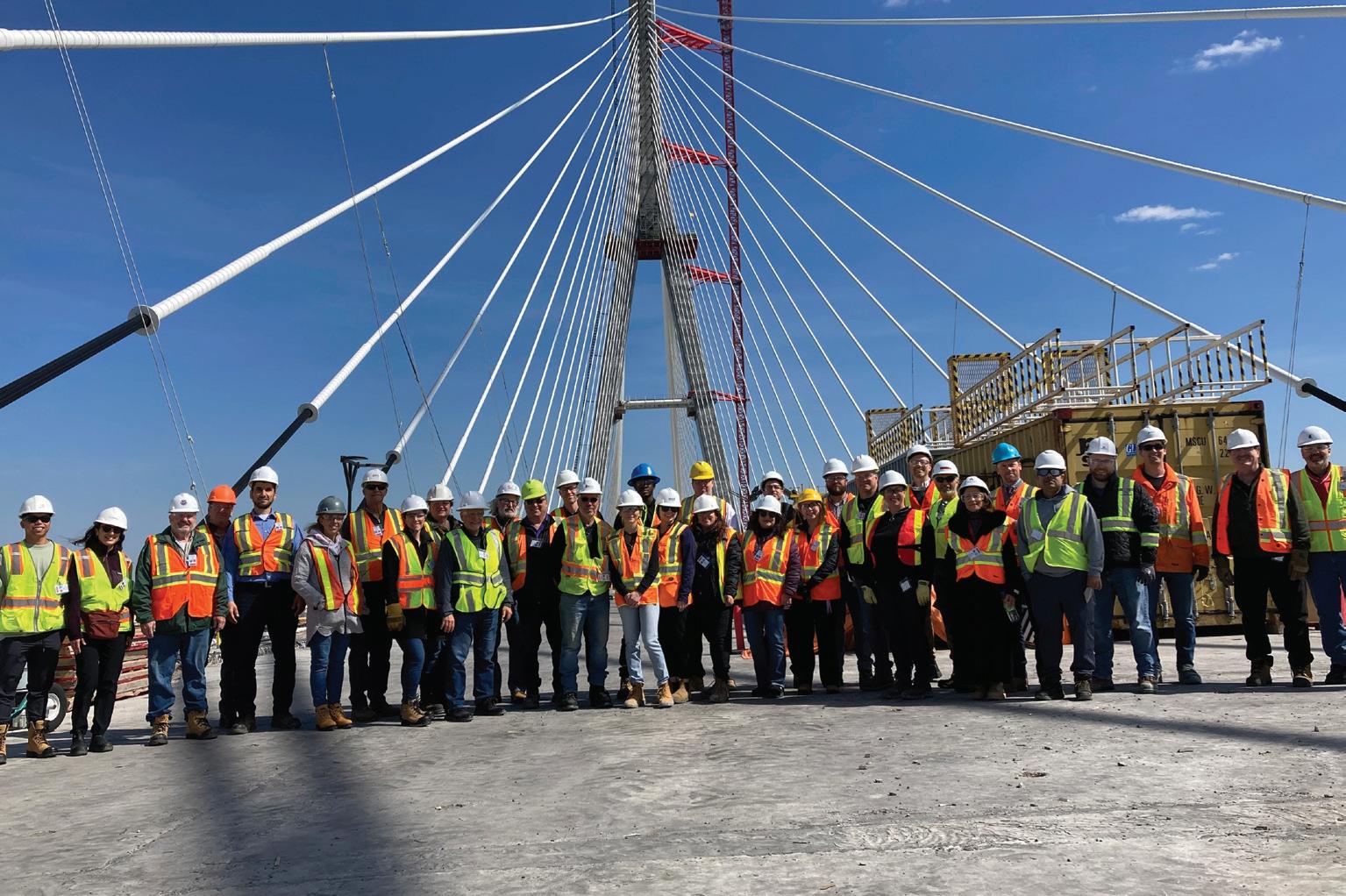






The Windsor-Essex Chapter hosts a tour of the Gordie Howe International Bridge, which connects Windsor, ON, to Detroit, MI.




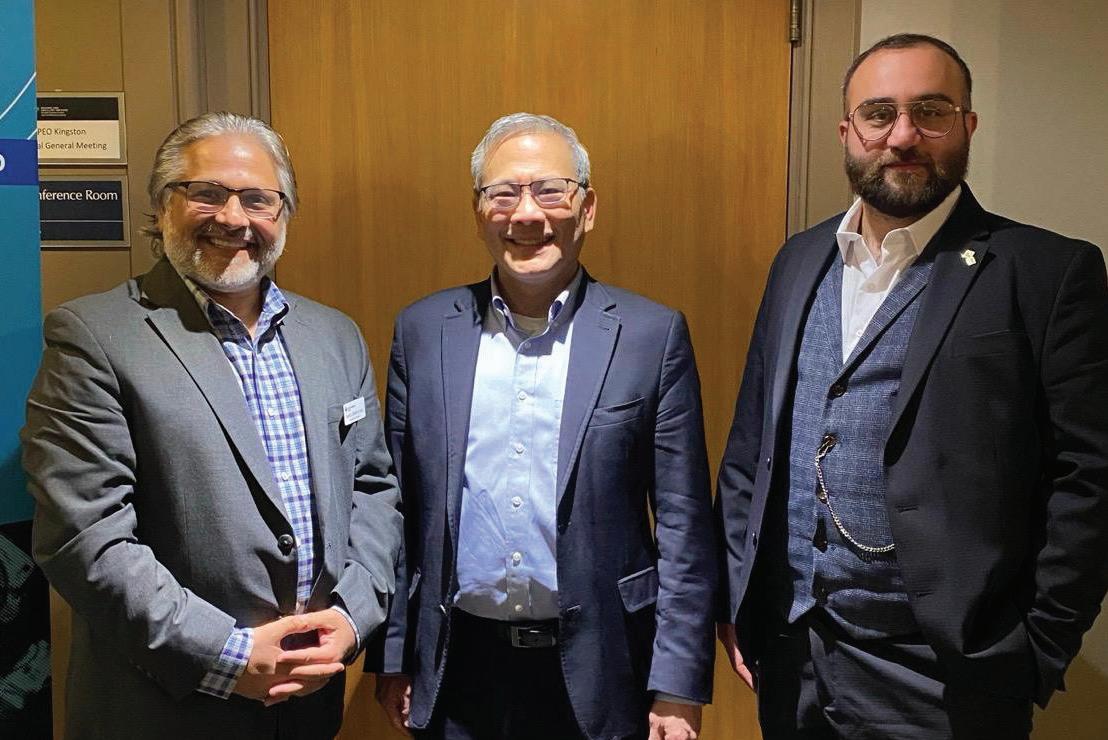


The North Bay Chapter holds a technical tour of Voyageur Aviation Corp as part of their chapter annual general meeting.

Kingston Chapter Government Liaison Program volunteers Hafiz Bashir, P.Eng. (left), and Reza Kashi, P.Eng. (right), with Kingston and the Islands MPP Ted Hsu.
The York Chapter hosts a licence presentation ceremony for a group of new professional engineers.
We answer common questions about the proper and ethical use of the engineer’s seal in professional practice.
By Jane Mustac, P.Eng.


Sealing a document as a professional engineer is a visible commitment to competence, ethics and public safety. Whether you’re newly licensed or have decades of engineering experience, questions about sealing documents can still arise. Understanding when and how to apply your professional engineer’s seal is essential to maintaining the integrity of your work and upholding public trust. Even seasoned engineers benefit from revisiting the standards that govern this critical responsibility.
We’ve gathered some of the most frequently asked questions about sealing practices and offer concise guidance to help you stay informed and confident in your work.
1. When am I required to seal a document?
The seal should be applied only to final versions of documents with engineering content. If you are not assuming responsibility for the entirety of the engineering content of the document, you should ensure the document clearly indicates the portion of the engineering content for which you are assuming responsibility. The presence of a seal on an engineering document indicates that the practitioner assumed responsibility for engineering content in the document, or, if more than one seal is affixed to the document, that the practitioners jointly and severally assumed responsibility, subject
to any qualification or limitation that is clearly indicated on or in the document and is reasonably understandable by users of the document. The engineer(s) must sign and date the document when applying the seal.
2. Should I seal record drawings?
Record drawings are engineering documents and must be sealed. All changes made are to be marked accordingly and recorded on the drawings. Documents referred to as “as-builts” are generally prepared using information furnished by the contractor or other field staff. Record documents are those prepared by a practitioner after verifying the actual details of the completed project. The practitioner who seals the record documents may not be the practitioner who sealed the design documents or the practitioner who observed the construction or fabrication. The practitioner who seals the record documents is only verifying that the record documents are an accurate reflection of what has been constructed or fabricated.
3. Can I use a digital seal?
Licensed engineers may seal drawings with an ink seal. They may also seal electronic documents with a digital signature. PEO’s position is that practitioners can use any digital signature software that meets the secure encryption requirements outlined in the Use of the Professional Engineer’s Seal guideline. That means using systems that uniquely identify the engineer and protect the integrity of the document. The signature and date must not be part of the electronic image but rather added separately by hand.
Simply pasting an image of your seal isn’t enough; engineers must ensure their signature process is verifiable and tamper-proof. For more information, visit www.peo.on.ca/licence-holders/peodigital-signature.
4. Should I use the seal for regulatory submissions?
Yes, the seal is often used for documents accompanying applications for permits to construct or demolish (commonly called a building permit) or to govern construction, enlargement or alteration of a building. State the purpose of the sealed and signed documents to avoid misinterpretation that they are to be used for a purpose that was not intended (for example, “Issued for permit” or “Issued for construction”).
Correspondence that incorporates engineering judgment or provides engineering direction are to be sealed by the professional responsible.
5. Are there instances in which I shouldn’t be using the seal? There are several situations where it is inappropriate for an engineer to use their seal. The seal should only be applied to an engineering document. The seal should not be applied to draft or preliminary documents that have not been finalized or approved. The intention of the drawing should be clearly identified (for example, design development drawings marked as “Preliminary—Not for construction” or “For review only”).
When sealing engineering documents that include more than one language, engineers must be technically fluent in any language that forms part of the document’s engineering content. They are also responsible for determining whether their language proficiency is sufficient to meet the professional standard expected of them, just as they must determine their technical competence in specific engineering areas.
The seal should never be used for promotional purposes, such as in logos, advertisements or marketing materials. Using the seal in these contexts implies professional responsibility for content that is not subject to the engineer’s direct oversight. Finally, engineers must not seal documents that fall outside their area of competence. Doing so can mislead clients, colleagues or regulators about the engineer’s qualifications.
6. What should I do if I discover that someone else has misused my seal?
If you suspect a person or company has misused your seal, please contact PEO’s enforcement hotline at 800-339-3716, ext. 1444, or by email at enforcement@peo.on.ca.
There are legal consequences for misusing the engineer’s seal. Specifically, unauthorized use of a seal is an offence under section 40 of the PEA. Conviction can result in fines up to $25,000 for a first offence and up to $50,000 for subsequent offences. In cases of fraud or forgery, criminal charges may also be laid under the Criminal Code of Canada. A practitioner should take reasonable steps to prevent their seal from being affixed to a document without their consent.
7. Can I rely on documents that were sealed by a practitioner in another Canadian jurisdiction?
All engineering documents relating to work to be done in Ontario must be sealed by a responsible and competent professional engineer licensed in Ontario.
For additional guidance on using the engineer’s seal, read PEO’s Use of the Professional Engineer’s Seal guideline at www.peo.on.ca/ sites/default/files/2022-03/PEOUseOfSeal2022.pdf. e
Jane Mustac, P.Eng., is PEO’s manager, practice and advisory services.

As part of our ongoing commitment to continuous improvement, we are seeking your feedback on our current professional practice guidelines and processes. Your insights are essential to ensure our standards remain clear, relevant and supportive of your work in today’s evolving engineering landscape.
We’re particularly interested in:
• Challenges you’ve encountered when applying the guidelines;
• Areas where additional clarification or support would be helpful; and
• Suggestions for tools, examples or training that could enhance your practice.
Please take a few minutes to share your thoughts via email to practice-standards@peo.on.ca.
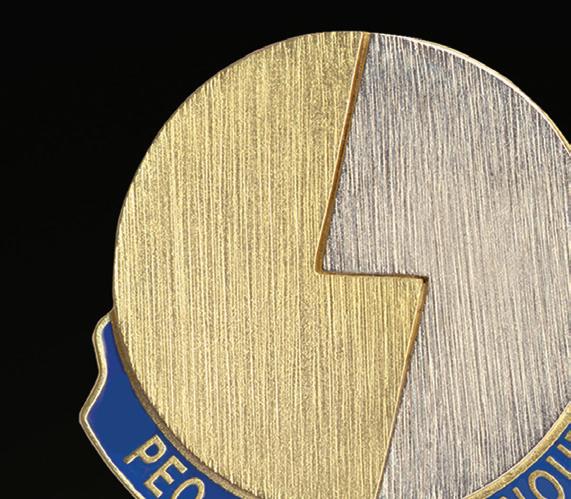



The Order of Honour is PEO’s highest volunteer recognition program. An honorary society, the Order recognizes PEO volunteers who have made substantial contributions to support PEO’s statutory mandate to regulate the engineering profession in Ontario to protect the public interest. In keeping with its Anti-Racism and Equity Code, PEO seeks nominees who reflect the diversity of the engineering profession.
In 2023, PEO streamlined the nomination and selection process of the Order of Honour to be transparent, free of subjectivity and better reflect PEO’s public protection mandate. As of last year, nominators are not required to submit letters of support.
THE ORDER OF HONOUR SELECTION COMMITTEE INVITES MEMBERS TO SUBMIT NOMINATIONS BY OR BEFORE 4 p.m. ON OCTOBER 10, 2025.
Nominators should follow the updated nomination guidelines, which can be found on PEO’s website, and submit complete details on their nominee through PEO’s online portal. Individual statements from each nominator must accompany the nomination. Members and Officers of the Order who have continued serving and leading the engineering profession can be nominated for an upgrade to a more advanced category. Questions? Email orderofhonour@peo.on.ca
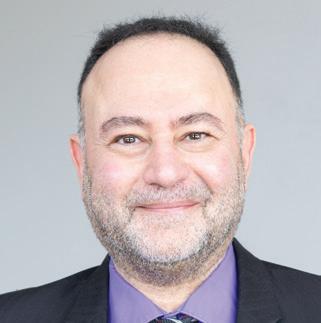
Fred Saghezchi, MASc,
President
Fred Saghezchi received his master’s degree in mechanical engineering from the University of Waterloo in 2003 and has 30 years of diverse professional experience specializing in product development. His professional experience includes working with Fortune 500 companies in a variety of fields, including aerospace, automotive and the heavy industries. In addition to his status as a professional engineer in Ontario, he is the recipient of a handful of certifications from several associations in Canada and the United States. Saghezchi currently runs his own company offering services and products to industry, such as solar energy, stack-up parking systems and electronic vehicle chargers.
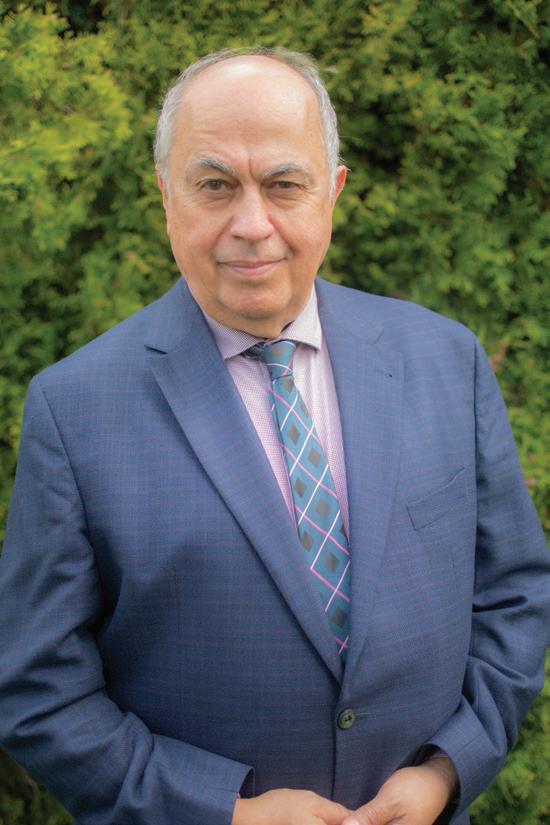
Gregory P. Wowchuk, P.Eng., FEC
Past President and Council chair
Gregory Wowchuk holds a BASc degree from the University of Windsor and a diploma in electrical technology from the former Ryerson Polytechnical Institute (now Toronto Metropolitan University), reflecting his affinity for both the theoretical and the practical. Along with his engineering education, Wowchuk has also taken courses in psychology and
He won second prize in the 1982 Ontario Engineering Design Competition. Wowchuk began his career in the defence systems division of Spar Aerospace Limited, and he is currently president of Wheatfield Instrument Corporation Ltd. and a special advisor to Dynamic Solutions Institute of Applied Knowledge Inc. in Detroit, MI.
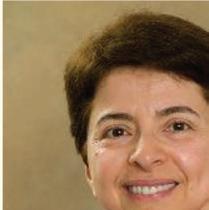


Leila Notash, PhD, P.Eng., FEC President-elect
Leila Notash is a professor in the department of mechanical and materials engineering at Queen’s University and was previously an assistant professor at the University of Windsor. Notash grew up in Iran and received her BASc, MASc and PhD degrees in mechanical engineering from the Middle East Technical University, Turkey; University of Toronto; and University of Victoria, respectively. Licensed by PEO in 1996, she joined PEO as a member of the Academic Requirements Committee (ARC) in 2003, served as the vice chair and then chair of ARC from 2015 to 2018 and was vice chair of the Kingston Chapter from 2015 to 2019. Notash is an associate editor (AE) of Mechanism and Machine Theory and the American Society of Mechanical Engineers (ASME)
He has been an active member of PEO’s Willowdale/Thornhill Chapter for the past 20 years. Saghezchi views the role of PEO Council and staff as serving licensed professional engineers, the real stakeholders, by monitoring engineering work for public safety and following regulatory actions to make sure the credibility and reputation of the stakeholders are protected. As president, Saghezchi is determined to change the Professional Engineers Act to reflect these values. He is also an avid supporter of self-governance in the engineering profession: only engineers can promote engineering values, not government. Saghezchi believes only a strong-president system, where the president is given increased administrative authority, can make an organization prosper and succeed. He believes in a grassroots approach to the presidency, driven by feedback and support from all members regardless of their geographical location. He can be reached on LinkedIn (@FredForPEOCouncil) or X (@FredForPEO). fsaghezchi@peo.on.ca
He has served as PEO councillor-at-large (2018–2020), a lieutenant governor-in-council appointed councillor (1997–2000) and chair of the former Communications Committee (1997–1999). He was also a co-founder of Engineers for Engineers (1997), Ontario Engineers for Democracy on Council (2011) and Ontario Engineers for Grassroots Democracy (2017). He is an ardent supporter of the self-regulation model of our profession and speaks often against bureaucracy and waste. His commitment to grassroots democracy spans several decades: He has run for Toronto City Council (2003 and 2006), served as a provincial returning officer (Etobicoke-Lakeshore) (1998–2003) and has co-founded several citizens’ advocacy groups. He was also president of the Etobicoke Historical Society (2004–2007).
Wowchuk holds a black belt in traditional Japanese karate, is an aficionado of old cars and enjoys pulling, modifying and rebuilding their engines. Wowchuk views the role of PEO Council as serving the profession and protecting the public interest. He firmly believes these two functions are not mutually exclusive. gwowchuk@peo.on.ca
Journal of Mechanical Design (2022–2024) and was an AE (2014–2020) and guest AE (2021–2022) of the ASME Journal of Mechanisms and Robotics and CSME Transactions (1999–2017). She was the symposium/program chair/co-chair of ASME International Design Engineering Technical Conferences and Computers and Information in Engineering Conference. She was a member of the Canadian Committee for the Theory of Machines and Mechanisms executive (1998–2004) and International Federation for the Theory of Machines and Mechanisms Permanent Commission on Communications (2001–2011) and was the chair of PC from 2006 to 2011. Notash has served on the Queen’s University Senate since 2009. She is committed to equity, diversity and inclusion (EDI) and has championed EDI among her students. She was a member (2009–2011, 2018–2020) and chair (2010–2012) of the Queen’s Senate Educational Equity Committee and the Canadian coordinator of an international capstone design project to provide international experience for undergraduate students (1997–2003).
leila.notash@queensu.ca



Sardar Asif Khan, PhD, MBA, P.Eng., FEC, PMP
Vice President (elected)
Sardar Asif Khan is a proactive, resultsdriven leader with a distinguished career in business transformation, operational excellence and large-scale manufacturing optimization. He currently leads continuous improvement at Stellantis parts and services, supply chain North America, while driving innovation and efficiency across operations in North America.
Khan received his doctor of engineering in manufacturing systems from Lawrence Technological University, master of business administration from Central Michigan University, master of engineering in manufacturing engineering from Wayne State University and bachelor of electrical engineering from the University of Engineering & Technology, Pakistan.
Since 2014, in his professorial role within the faculty of engineering at the University of Windsor, Khan has mentored and
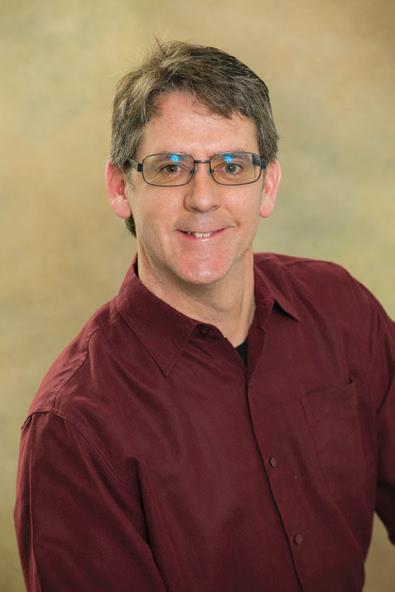
Randy Walker, P.Eng.
Vice President (appointed)
Randy Walker received his BEng from Ryerson University (now Toronto Metropolitan University) and was licensed by PEO in 1996. He started out working in an electrical department at a papermill in Trenton, ON, moved up to IT and plant engineering and then to department manager. In 2010, Walker went into construction and worked on many interesting projects at CFB Trenton and Kingston. He recently served as an
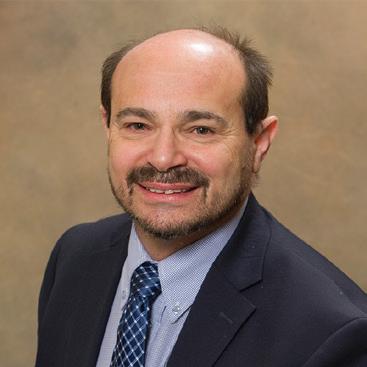
Lorne Cutler, MBA, P.Eng.
Lieutenant Governor Appointee
Lorne Cutler graduated with a BASc in chemical engineering from the University of Toronto in 1979. He worked for Dow Chemical for four years in Fort Saskatchewan, AB, before returning to the Ivy School of Business at Western University, where he completed his MBA in 1985. In 1985, Cutler joined Export Development Canada (EDC), where he was responsible for signing loans in excess of $1 billion in India and the countries of central and eastern Europe and the former Soviet Union. In his capacity as senior advisor, Africa, Europe and Middle East in EDC’s International Business Development Group, Cutler was primarily responsible for country and sector development strategies, relationship management with Canadian banks and exporters interested in the region and implementation of financing facilities with international financial institutions.
inspired numerous graduate engineering students about the benefits of lean manufacturing and the lean principles involved. Passionate about bridging the gap between academia and industry, he equips the next generation of engineers with real-world insights. He is deeply engaged in professional and community service, serving as a director of the Windsor-Essex County Board of Health, chair of the Automotive Product Design Advisory Committee at St. Clair College and warden for the Calling of an Engineer (Camp 14). Passionately active in PEO, he has served on the Windsor-Essex Chapter board since 2006 (including as chair and many other roles) and vice chair of the Government Liaison Committee, working to enhance regulatory policies and strengthen engineering governance.
A recipient of numerous accolades—including the FCA Top Leadership Award (Leader of Leaders), PEO Order of Honour (Member level), Ontario Volunteer Service Award and Windsor-Essex County Engineer of the Year Award—Khan’s achievements are a testament to his contributions to the engineering profession, leadership and service. He remains committed to strengthening PEO’s role as a regulator, while advancing the engineering profession’s impact on society. akhan@peo.on.ca
Walker has spent 13 years in the chapter system, starting out as webmaster, moving on to chair for seven years and past chair for the previous five years. He is also a webmaster and GLP representative for the Quinte Chapter. Walker enjoys motorcycles, reading and being challenged. He is looking forward to the next two years serving as Eastern Region councillor. rwalker@peo.on.ca
Upon early retirement in 2009, Cutler started a consulting firm, LAC & Associates Consulting, which focused on the areas of policy analysis and development, training, personal finance, personal taxation preparation and strategies, municipal finance, small business consulting, social finance and international business development. For several years prior to 2019, Cutler delivered a Professional Practice Exam training course for international engineering graduates for the Ontario Society of Professional Engineers. He received a Queen Elizabeth Diamond Jubilee Medal, Ontario 150 Award and Ontario Volunteer Services Awards for his volunteer work with such organizations as Ottawa Community Loan Fund and Jewish Family Services of Ottawa. For several years, Cutler has also been president of his local community association and treasurer of the Federation of Citizens’ Associations. Cutler is chair of PEO’s Audit and Finance Committee. lcutler@peo.on.ca

Shahandeh Hannah Ehtemam, P.Eng.
East Central Region Councillor
Shahandeh Hannah Ehtemam is a seasoned civil engineer with over a decade of experience, holding a BEng in civil engineering with a minor in management sciences from Toronto Metropolitan University. Licensed as a professional engineer in Ontario and Alberta, she also holds her PMP certification from the Project Management Institute. Ehtemam has been volunteering with PEO since 2014 and has most recently served as the chair of York Chapter for two consecutive terms from 2022–2024. As an avid volunteer, Ehtemam is also an active member of the Tunnelling Association of Canada as part of the Equity, Diversity and Inclusion Committee.
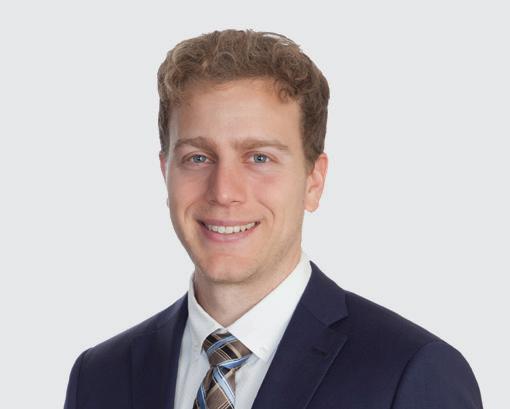
Sean Decloux, MEng, MBA, P.Eng., PMP
Sean Decloux holds a bachelor of civil engineering from the University of Maine (2016), where he balanced academics with playing Division 1 football. Building on his engineering foundation, he earned a master of engineering (2021) and an MBA (2024) from the
Since 2016, Decloux has been guiding clients across Ontario in delivering critical infrastructure projects. Decloux’s experience
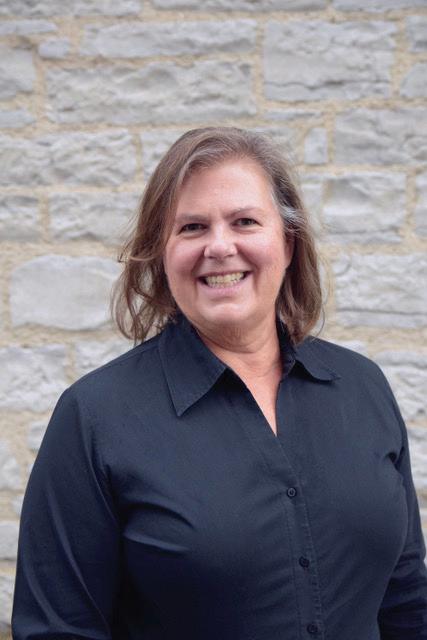
Paula R. Klink, PhD, P.Eng., FEC
Paula R. Klink is an environmental engineering consultant in Kingston, ON, with over 25 years of experience in areas ranging from air emissions modelling for small businesses to source water protection, with special expertise in historic landfills. She designed diesel engines and developed and implemented emission monitors and controls in coal-fired boilers. In addition, she has developed and taught environmental and engineering courses at both Queen’s University and Royal Military College.
Ehtemam’s expertise lies in project management, design management and construction supervision. Her career highlights include serving as the design manager for grade separations on Metrolinx’s On Corridor Works project, a pivotal project within Ontario’s historic GO Rail Expansion Program. As deputy design manager for the Green Line LRT in Calgary, she showcased her leadership in conceptual design and planning for a 460-km low-floor LRT. Her commitment to excellence is evident in her meticulous approach to problem-solving, visualizing challenges and implementing engineering best practices.
With a track record of success in diverse projects and a passion for infrastructure development, Ehtemam is poised to continue making significant contributions to the field. She believes in continuous learning and collaboration and is truly grateful for the opportunity to serve the engineering community and champion young professionals in STEM.
shehtemam@peo.on.ca
spans engineering design, construction and program management, providing him with a deep understanding of how theory translates into real-world applications that serve the public.
Proud to hold the title of professional engineer, Decloux is committed to advancing the profession. As a councillor-at-large, he seeks to shape PEO’s future—driving it toward greater inclusivity, accessibility and impact to support engineers and aspiring engineers at all stages of their careers. sdecloux@peo.on.ca
Klink served as a volunteer member of Engineers Canada’s Canadian Engineering Accreditation Board (CEAB) for over 10 years in positions with increasing leadership responsibility, culminating as chair in 2022–2023. She also acted as liaison between CEAB and the Engineers Canada board of directors. Klink has experience evaluating international engineering licensing practices with the International Engineering Alliance, most recently serving as chair of an APEC evaluation.
Klink has been involved in women in engineering activities since the 1980s when she was an undergraduate engineering student at the University of Wisconsin. She has held national roles in the Society of Women Engineers, but she is most proud of her work creating the activity GoEngGirl. pklink@peo.on.ca
Randy Walker, P.Eng. (see Executive Committee)
Eastern Region councillors
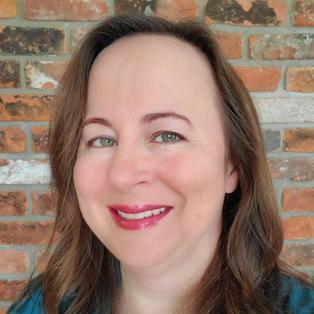
Chantal Chiddle, P.Eng.
Chantal Chiddle is a highly skilled professional with diverse experience in the engineering and construction fields. She holds a civil engineering technology diploma from St. Lawrence College (Kingston) and a bachelor of engineering degree in civil engineering from Lakehead University (Thunder Bay) through the accredited bridging program. Chiddle was one of a handful of female students enrolled in the civil engineering programs.
Licensed since 2005, Chiddle has over 25 years of experience in the water and wastewater industry. Her practice focus in
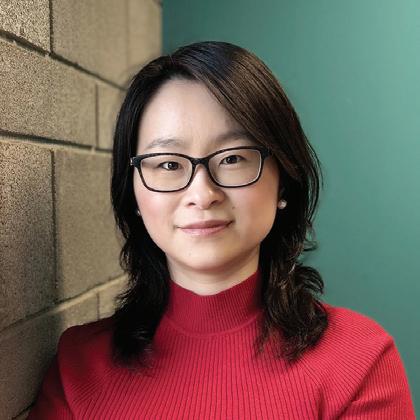
Susan Jingmiao Shi, MEng, P.Eng.
Susan Jingmiao Shi earned her bachelor of applied science degree in environmental engineering from the University of Windsor in 2010, graduating with distinction. She then obtained her master of engineering degree in civil engineering from Queen’s University in 2013. With nearly 15 years of experience in the consulting industry, Shi has collaborated with municipal, First Nations and industrial clients across Ontario on various projects, including water and wastewater treatment, water storage, pumping station and

Nanda Layos Lwin, P.Eng., FEC
Nanda Layos Lwin is a professor in the School of Environmental and Civil Engineering Technology at Seneca Polytechnic in Toronto. In February 2023, he was elected as an East Central Region councillor on PEO Council. Prior to his election to Council, Lwin served 18 years on the executive of PEO’s Willowdale/Thornhill Chapter, four of those years as chair. He also sat on PEO’s East Central 30 by 30 Committee and was a member of the Government Liaison Committee. He is a member of the Ontario Society of Professional Engineers and the Council of Tall Buildings and Urban Habitat. In recognition of his contributions and service to the engineering profession, Lwin was made a fellow of Engineers Canada in 2015 and inducted into PEO’s Order of Honour in 2022.
As an educator, Lwin began teaching at Humber College in Toronto in 2003, and then at Seneca the following year. There,
design and project management for water and wastewater projects prepared her for her current role. In 2015, Chiddle moved to the heavy civil construction industry as senior engineer/project manager working on infrastructure reconstruction projects. A respected leader in her field, Chiddle continues to contribute to the engineering and construction industries through work and volunteering.
Chiddle is an active volunteer and has spent over 15 years volunteering at PEO. As a past member of PEO Council (2020 to 2023), she sat on the Finance Committee, Legislative Committee and the Regulatory Policy and Legislative Committee, with one term as chair. Passionate about governance and giving back, Chiddle also sits on the board of Ontario One Call, including the Risk, Finance and Audit Committee. Chiddle is an avid reader, a world traveller, an army brat and enjoys listening to live music. cchiddle@peo.on.ca
lagoon. One of Shi’s most notable experiences is in master planning and class environmental assessment for municipal water and wastewater systems. She brings a grounded and practical approach to the early planning stages of projects, leveraging her expertise in complex design projects. Shi is recognized for developing long-term solutions that are practical, affordable and defensible. Additionally, she is seasoned in public consultation and has led local projects that have attracted significant public and stakeholder interest. Shi has been actively involved in the PEO chapter system, beginning her volunteer work with the Kingston Chapter in 2016 and serving as chapter chair from 2023 to 2025. She is a strong advocate for the chapter system and values engaging with members at the local level. sshi@peo.on.ca
he co-founded the student-run Seneca Civil Society and publishes an annual directory of civil engineering firms. In 2021, he established the Nanda Layos Lwin Civil Endowed Award for students in financial need.
Lwin holds a bachelor’s degree in civil engineering from the University of Toronto and a master’s degree in engineering and public policy from McMaster University. He has worked in both structural and transportation engineering. While employed at NCK Engineering in Toronto, he fulfilled a childhood dream by working on the structural rehabilitation program of the CN Tower, then the world’s tallest free-standing structure. Lwin is a journalist and the author and publisher of eight reference books on contemporary music and wrote a popular weekly column on music charts. His articles have appeared in The Globe and Mail, canoe.com, and The Hamilton Spectator
In his leisure time, he enjoys keeping track of music charts, listening to music, reading, writing and politics, and he can often be found in a bookstore, museum or art gallery. He has also performed stand-up at a Toronto comedy club and is a former president of the Ruskin Literary and Debating Society, one of the oldest debating clubs in Canada. nlwin@peo.on.ca
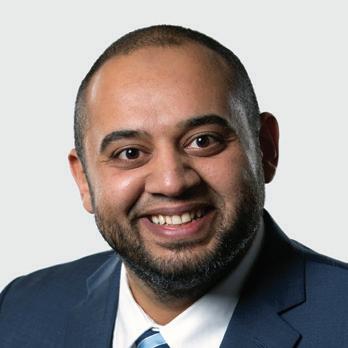
Ahmed Elshaer, PhD, P.Eng.
Ahmed Elshaer is a distinguished faculty member dedicated to enhancing the resilience and sustainability of built environments against natural hazards, particularly focusing on wind and climate impacts. As the founder and leader of the Structural and Wind Engineering Research Laboratory (SWERL), Dr. Elshaer has spearheaded numerous significant research projects and supervised a diverse range of young researchers, from postdoctoral fellows to undergraduate students. With a wealth of academic and professional experience spanning multiple universities and engineering firms in Canada and overseas, Dr. Elshaer has contributed significantly to the field of structural engineering. His research portfolio includes innovative studies on wind impact on struc-

Luc Roberge, P.Eng., FEC
Luc Roberge was raised in Verner, a small dairy community located in northeastern Ontario. He received his bachelor of engineering science (mechanical) from Queen’s University, was registered with PEO in 1988 and has been a member of OSPE since its inception. Roberge started as an EIT in the pulp and paper industry with MacMillan Bloedel Ltd., went on to work in the lumber industry with Weyerhaeuser and ended his career with Ontario Power Generation in the renewable energy sector. His participation in the chapter system started 20 years ago with the Algoma Chapter. He has also been a member of the
tures, Indigenous housing, modular structures, aerodynamic and structural optimization and the use of artificial intelligence and machine learning in structural applications.
Dr. Elshaer’s dedication to advancing the field of civil engineering is further demonstrated through his active involvement in professional organizations. He has served as vice chair of the Structures Division at the Canadian Society of Civil Engineering (CSCE), chair of the CSCE Structures specialty conference for three years, and as an evaluating committee member for prestigious funding bodies such as NSERC, FRQNT and the Ministry of Economic Development.
In recognition of his outstanding contributions, Dr. Elshaer has received several prestigious awards, including the Lakehead Merit Award in Combined Research and Administrative Services (2024), the Equity, Diversity and Inclusion (EDI) initiative competition (2022), the Year of Climate Action Award (2021) and the Alan Davenport Award of Excellence in Wind Engineering (2016). aelshaer@peo.on.ca
Kapuskasing-Porcupine Chapter, where he was chair in 2019, and the North Bay Chapter, where he was chair from 2012 to 2014. Roberge has been a member of PEO Council since 2020 as a Northern Region councillor. During this period, he served on the following PEO committees: Licensing, Auditing, OSPE-PEO Joint Relations, Governance, Regional Councillors (RCC), Chapter Task Force and Human Resources and Compensation (HRCC) committees. During this period, he served as chair of the HRCC for three terms, vice chair of RCC for two terms and was the vice chair of the 2023 Volunteer Leadership Conference Planning Committee. Roberge was inducted into the PEO Order of Honour at the Member level in 2019. Before his involvement with PEO, he also volunteered as a Scout leader. He is looking forward to continuing to serve as a Northern Region councillor. lroberge@peo.on.ca
Western Region councillors
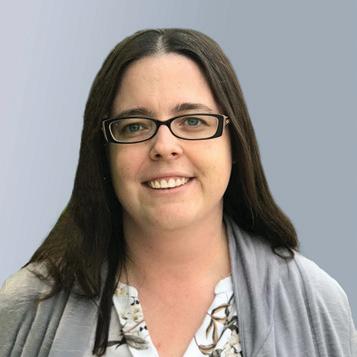
Vicki Hilborn, MASc, P.Eng.
Vicki Hilborn (she/her) began her engineering career working for a design-build firm focused on agricultural anaerobic digesters where she maximized the mechanical and biological operation of anaerobic digester systems throughout North America.
Currently, Hilborn works as the engineering program coordinator for the Ontario Ministry of Agriculture, Food and Rural Affairs, where she leads a team of agricultural engineers located across Ontario to support innovation within Ontario’s agri-food sector.
In that role, she is regularly asked to speak on topics such as nuisance control and barn fire prevention and was selected as a 2019 Amethyst Award winner in the Outstanding Young Professional Award category. Hilborn has also sat on a number of boards, including the Zooshare Biogas Cooperative and the Canadian Biogas Association.
Hilborn has previously acted as the chapter chair for PEO’s Brantford Chapter and volunteered on several PEO committees, including the Equity and Diversity Committee, Government Liaison Committee and Advisory Committee on Volunteers. Hilborn graduated from the University of Waterloo with a BASc (environmental engineering) and University of Guelph with a MASc (environmental engineering). Hilborn lives in Brantford with her husband; son, Eden; and dog, Wally. vhilborn@peo.on.ca
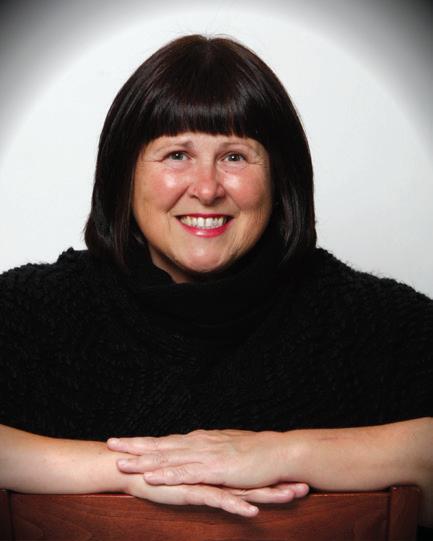
Susan MacFarlane, MSc, PhD, P.Eng.
Susan MacFarlane has a PhD in civil (environmental) engineering from the University of Toronto and a MSc and BSc(Eng) in biological (environmental) engineering from the University of Guelph. Dr. MacFarlane has worked and solved problems in the areas of water, waste, stormwater, wastewater, spills and contaminated sites. Her most recent position was general manager of Lambton Area
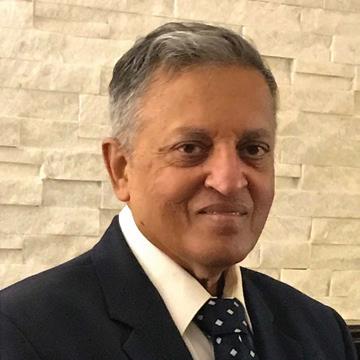
Pappur Shankar, P.Eng., FEC
Pappur Shankar is a mechanical engineer who has worked in many capacities on major EPC projects, ranging from $50 million to $500 million, for the past 35 years. Since 2017, Shankar has been involved in marketing and business development of engineering products. His experience in project management spans a wide range of industry sectors related to power (nuclear, mining, thermal, hydroelectric and utilities), oil and gas, mining and utilities with organizations including EXXON, Iberdrola USA, OPG, Hydro One
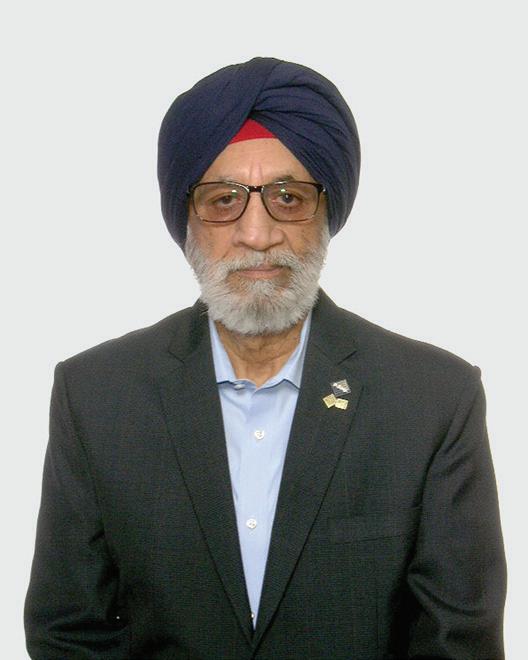
Ravinder Panesar, P.Eng., FEC
After graduating in civil engineering from MNR Regional Engineering College (now NIT) with honours, Panesar joined the Punjab Water Supply and Sewerage Board, an undertaking of the Government of Punjab responsible for providing the water and wastewater infrastructure in Punjab under the International Development Agency. In 1986, Panesar became estate officer cum engineer to establish the Regional Engineering College campus (now NIT), a joint venture of the Government of India and State of Punjab, where he completed 80 per cent of the campus comprising of an administrative block, various teaching departments, faculty residences and student hostels, sports facilities and the infrastructure of roads, water and wastewater.
Water Supply System (LAWSS), which supplies water to about 100,000 people in Lambton County. At LAWSS, she managed capital projects and oversaw the operations and maintenance of the water treatment plant, booster stations and distribution system. Prior to her work at LAWSS, Dr. MacFarlane worked for a variety of environmental consulting companies and had the opportunity to provide services to many of the petrochemical and chemical industries in Sarnia-Lambton.
Dr. MacFarlane currently volunteers on two committees focused on the health of the St. Clair River, is involved and interested in local politics and has tried her hand at writing plays, short stories and poems. smacfarlane@peo.on.ca
and numerous mining and oil companies, and he was a member of the due diligence team for Cold Lake project in 1981.
Shankar is a co-founder and past president of PMI Lakeshore Chapter and a current member of PEO and the OSPE Energy Task Force. He has volunteered with PEO at the chapter level for 17 years in many capacities. He was the vice president of finance and SME for Indo Canada Chamber of Commerce in 2017 and a conference chair of Canada India Business Symposium, held in Toronto, where 130 companies participated. Shankar led the business delegation to India in 2017 as part of ICCC. He aims to address the challenges that must be faced over the next few years and work with Council to address regulatory requirements that will have a positive impact on the profession. pshankar@peo.on.ca
In 1996, Panesar migrated to Canada and joined C&T Reinforcing Steel as a detailer and estimator. After obtaining his professional engineering licence in January 2000, Panesar joined PEO’s Brampton Chapter as an executive. Since then, he has served the chapter in various capacities, including chair, vice chair and almost 20 years as GLP chair. As a chapter chair, Panesar invited experts, speakers and politicians to enhance the knowledge and outlook of engineers. Panesar is a member of the Ontario Society of Professional Engineers and has mentored nationally and internationally educated engineers.
In 2002, Panesar joined Albrecht Reinforcing Steel (now AGF Rebar) as a detailer and estimator where he supervised a team of estimators and managed diverse projects. Currently, Panesar is associated with Technoarc Inc., an architectural consultant, and MAGH Engineering Inc. rpanesar@peo.on.ca
Lorne Cutler, MBA, P.Eng. (see Executive Committee)

Andrew R. Dryland, C.E.T.
Andrew Dryland is a senior associate, contract administrator with R.V. Anderson Associates Limited, with over 36 years of experience in inspection and contract administration. He has been involved with multi-discipline projects in the mechanical, electrical, SCADA and process works for both water and wastewater projects. He graduated from Cambrian College in 1986 with a diploma in civil technology and started his career with R.V. Anderson Limited.
Dryland became a lieutenant governor appointed councillor to PEO Council in 2020. He is also an active member of Ontario Association of Certified Engineering Technicians and Technologists (OACETT) and volunteers with his local chapter. Dryland is
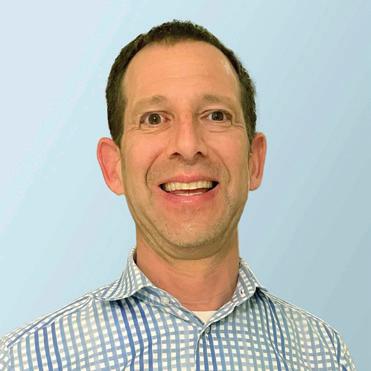
Paul Mandel, MBA, CPA, CA, CBV, CFF
Paul Mandel is a recent lieutenant governor appointee to PEO Council. He is a chartered professional accountant and chartered business valuator by training and is currently the national business valuations partner for RSM Canada. With 25 years of full-time business valuation
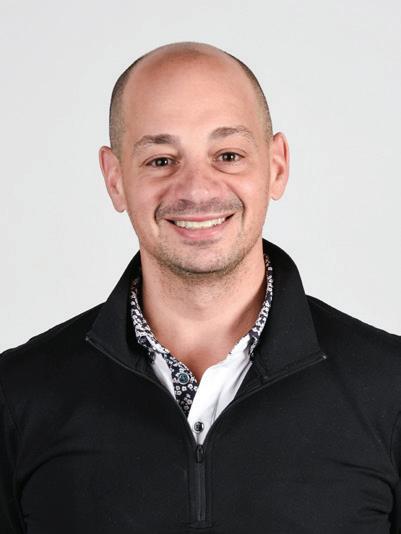
Andrew Naassan, P.Eng.
Andrew Naassan is the field engineering manager at Bruce Power, Canada’s largest nuclear power generating site. In this role, he is responsible for the installation and commissioning of new equipment and modifications critical to the life extension of the nuclear fleet. Prior to this role, he held leadership positions in engineering
an elected vice president of OACETT’s professional affairs and services board (PASB) and was on the OACETT administration board from 2017 to 2019. As PASB councillor for the northern region from 2009 to 2017, he served as a member of the Policy Committee and provided leadership to northern region chapter executives and members. Dryland was vice chair of PASB from 2015 to 2017 and has over 10 years’ experience serving on OACETT committees and Council. He has been involved with the OACETT Sudbury Chapter in many different capacities, volunteering as chapter treasurer, secretary and chapter chair for eight years.
Dryland has acquired over 35 years’ experience in managerial roles in large organizations, and this has allowed him to be an excellent public speaker and to develop strong leadership skills. He looks forward to continuing to use these skills for OACETT and PEO to better the engineering industry for all professionals in the field. adryland@peo.on.ca
experience, his clients include both public companies navigating valuation issues and parties in disputes where value of a business is an issue. He has been accepted as an expert witness by Ontario courts as an expert in business valuation and economic damages. When not working, he is an avid skier and biker and a parent to four children. pmandel@peo.on.ca
With 20 years of experience in the nuclear industry, Naassan is a results-driven leader who ensures all aspects of nuclear safety and equipment reliability are the overriding priority in delivering projects. He has a bachelor of applied science in chemical engineering from the University of Toronto. anaassan@peo.on.ca
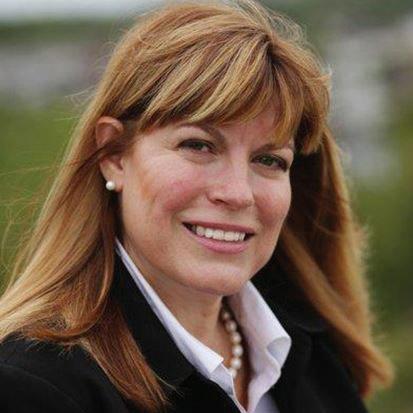
Rachel Prudhomme, BEng, MSc, P.Eng.,
BPHE
Rachel Prudhomme worked in the municipal sector as a director for 17 years, and previously in the private sector as an entrepreneur and a branch manager at a multinational consulting firm for 18 years, and in education as a lecturer and then as dean for 12 years. As an entrepreneur, she completed projects in Ontario, Québec, South America and Europe.
Prudhomme has extensive governance experience, having received past appointments to several premier of Ontario’s Provincial Advisory Councils, including the Advisory Council on Women in Business and Industry, the Research Excellence Awards Board and the Mineral Sector Advisory Council. She also served on numerous boards and committees, such as a hospital board, municipal airport board and a world-class science centre board, to name a few. Prudhomme is a newly appointed voting
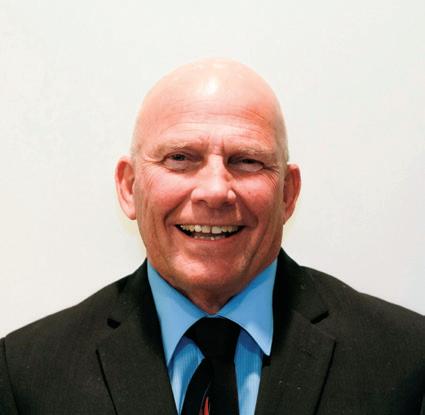
Scott Schelske, P.Eng., FEC
Scott Schelske is a retired professional engineer in Ontario who worked for 47 years after graduating with a BSc in mining engineering from Queen’s University in 1975. His extensive experience in operations, engineering, construction and consulting includes decades in a supervisory or managerial capacity of over $1 billion in capital projects. He has experience in education as both a high school teacher and headmaster of an underground mine training facility and was certified as an industrial and safety trainer. Notable positions include chief engineer at the Griffith Mine, the largest mining operation in Ontario at the time; quarry manager of Cold Spring Granite Company, the largest granite quarrier in the
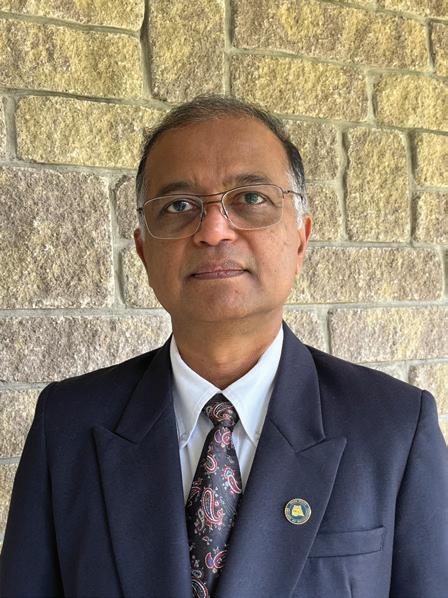
Uditha Senaratne, P.Eng., FEC Lieutenant Governor Appointee
Uditha Senaratne is the manager of the independent technical reviews department (also known as the Safety Review Committee) at Canadian Nuclear Laboratories (CNL), Chalk River, ON. He is responsible for the independent technical review of all nuclear-safety-related documents prior to their submission to the Canadian Nuclear Safety Commission,
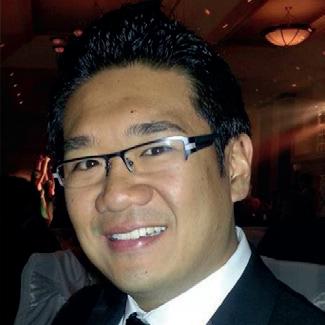
Sherlock Sung, BASc
After obtaining a bachelor of applied science degree from the University of Toronto, Sung held technical positions in both the public and private sectors domestically and internationally across different industries. His employment experiences include research and devel-
member of the board of governors at Laurentian University and will also serve on the university’s Governance Committee, Human Resources Committee and Joint Committee on Bilingualism.
Prudhomme was the first female to graduate in her engineering program and became the first full-time woman member of the faculty in science and engineering at Laurentian University. She is an advocate for women in STEM and has mentored several young women wishing to advance their careers.
In addition to her engineering degree, Prudhomme also holds a bachelor of health education, a master of science in applied physics, a master’s certificate in municipal leadership, a graduate diploma in public administration, and she has completed all coursework towards a PhD in engineering. She hopes to complete her PhD thesis as a retirement project. She enjoys learning languages and is fluent in English, French and Italian, has good abilities in Spanish and is currently learning Mandarin. She also appreciates the arts and enjoys classical as well as today’s Top 40s music. She is an accomplished pianist and has composed and performed the musical score for an award-winning play. rprudhomme@peo.on.ca
world; regional mineral development consultant with the Ontario Ministry of Northern Development and Mines, where he was nominated for an Amethyst Award and was the Ontario Government’s team leader for permitting of over 50 mining ventures; and manager of mining and engineering at the Lac Des Iles Mine, North America’s largest palladium producer.
Schelske left mining and transitioned into civil engineering with a local consulting firm and spent the last 15 years of his career working with Indigenous Peoples managing two Tribal Council technical services departments. As such, he was the professional project manager for over 100 capital projects, plus the construction or renovation of over 200 housing units for the Anishinaabe People.
Schelske held various positions on the executive for PEO’s Lake of the Woods Chapter for 22 years, was named a fellow of Engineers Canada and inducted to PEO’s Order of Honour for 2020. He was also given a lifetime achievement award by the Worldwide Who’s Who for technical and engineering professionals. sschelske@peo.on.ca
the federal regulator of nuclear power and materials in Canada. Senaratne has over 20 years of experience in various aspects of nuclear engineering at CNL.
Senaratne holds a B.Sc.Eng. degree in chemical engineering from University of Peradeniya, Sri Lanka (1991) and a Master of Science degree in nuclear engineering from Penn State University, University Park, Pennsylvania, US (1995, Fulbright Scholar). He is a licensed professional engineer with PEO and a fellow of Engineers Canada. Senaratne’s pastimes include photography and model railroading (Canadian Pacific models). usenaratne@peo.on.ca
opment, product design, system commissioning, test and validation, quality assurance, technical instruction, operations, infrastructure management, procurement, contract administration, metrology and team supervision. ssung@peo.on.ca
Decisions made by Council at its 568th and 570th meetings on April 4 and June 20, respectively.
By Nicole Axworthy
At its June meeting, Council approved PEO’s 2026–2030 Strategic Plan, including the following strategic pillars and goals:
1. Effective and relevant regulation: Model excellence in regulating the practice of professional engineering and governing the engineering profession in order that the public may be served and protected.
2. Governance advancement: Enhance governance structures to champion effective leadership and decision-making to deliver on PEO’s statutory mandate.
3. Organizational excellence: Nurture a high-performing organization through its people, processes and systems.
Council also directed the CEO/registrar to develop an operational plan to support its effective implementation and share the plan with Council at its September 2025 meeting. Council further directed the CEO/registrar to develop a budget to support its implementation, beginning with the 2026 fiscal year and continuing each year for the duration of the strategic plan.
Prior to the strategic plan’s formal approval by Council, at its April meeting Council heard a progress report from MDR Strategy Group on work towards the new plan. By April, PEO had completed consultations with internal participants and external stakeholders, including focus groups, meetings and surveys. Next steps included a full senior leadership meeting to develop draft strategic goals and objectives and a Council workshop.
At its April meeting, Council approved the audited financial statements for the year ended December 31, 2024, and the auditor’s report and authorized the president and president-elect to sign the audited financial statements on Council’s behalf. With Council’s approval, the audited financial statements were presented to licence holders at PEO’s 2025 Annual General Meeting (AGM) (see p. 10), published in Engineering Dimensions (see the Spring 2025 issue, p. 36) and on PEO’s website, as required by legislation and By-Law No. 1. Additionally, Council approved a motion to recommend to licence holders at the AGM that Deloitte LLP be appointed as PEO’s auditor for 2025 and hold office until the next AGM or until a successor is appointed.
At its April meeting, Council approved voting in favour of the per capita assessment fee increase of Engineers Canada (EC). Council’s motion allowed PEO’s representative (PEO president or their designate) to vote in favour of the fee increase at EC’s annual meeting of members in May.
At its December 2024 meeting, the EC board agreed to recommend to its provincial and territorial members that the 2027 per capita assessment fee would be at $11 per registrant. This recommendation then went to its members for their approval and voting instructions before the annual meeting.
PEO is a member of EC along with other provincial and territorial engineering regulators. EC’s work—including accrediting undergraduate engineering programs, developing national standards and guidelines, and enhancing collaboration and harmonization among engineering regulators—strengthens PEO’s ability to fulfill its publicprotection mandate.
At its April meeting, Council passed a motion to update By-Law No. 1 and the PEO Governance Manual to clarify the roles of the chair and the president.
At its February meeting, Council directed staff to review By-Law No. 1 and any applicable policies and propose changes that would align them with Council’s decisions regarding the role and responsibilities of the chair as Council’s chosen representative. This is specifically in relation to internal administrative functions, including calling meetings and the approval of contracts and expenditures above a specified threshold, subject to potential member input as needed.
An updated version of the bylaw will be available on PEO’s website.
At its April meeting, Council passed a motion to inform PEO’s membership of its fundamental opposition to Submission #1 presented at PEO’s April AGM (see p. 12), as it goes against PEO’s governance model and practices governing the operation of not-for-profit organizations in Ontario. Council and its governance committees have on numerous occasions discussed the matters set out in AGM Submission #1, and therefore the content of the submission is substantially opposed by Council.
At its April meeting, Council agreed to re-nominate Marisa Sterling, P.Eng., FEC, to serve a further one-year term from 2027 to 2028 as an EC director from Ontario, conditional on her being chosen as president-elect at the May 2025 EC board meeting.
This motion addressed a request to extend the term of Sterling as an Ontario director to enable her to seek election as EC president-elect. An individual who becomes
president must first serve a year as president-elect and then, after their term as president, must be willing and eligible to serve as past president, making this a threeyear commitment. Sterling’s current term as a director will end in 2027. A one-year extension of Sterling’s term was necessary for her to be eligible for the president-elect election in May 2025.
At the same meeting, Council agreed to re-nominate Tim Kirkby, P.Eng., FEC, to serve a two-year term from 2026 to 2028 as an EC director from Ontario, conditional on him being chosen as president-elect at the May 2025 EC board meeting. Council also nominated Nick Colucci, MBA, P.Eng., FEC, for the vacant Ontario director position on the EC board.
At its June meeting, Council formally endorsed the establishment of the Engineering Intern (EIT) 2.0 program. It directed staff to work with the Ministry of the Attorney General to prepare changes to the Professional Engineers Act (PEA) and regulations in order to implement Council’s policy direction for EIT 2.0.
This decision follows Council’s April endorsement of an EIT program as a pathway to licensure, meaning that the program would be one possible path by which a participant can demonstrate commitment to the profession and meet the experience requirement for licensure. The new EIT program will be a structured program that supports participants in gaining relevant experience on their way to licensure. Registration in the program would be optional; however, those who choose to become EITs will need to satisfy program requirements.
In November 2024, Council committed to reinstating a new EIT program. Extensive stakeholder consultations informed the policy proposal for the new program (see In Council, Engineering Dimensions, Winter 2025, p. 43).
At its June meeting, Council endorsed the high-level action plan for the development of a Council remuneration framework and competency-based nominations process and acknowledged the associated financial implications. Council also directed PEO staff to review the issue of remuneration for members of statutory committees and provide a preliminary report through the appropriate governance committee no later than the end of the current Council term.
In February, Council endorsed the recommendations of a third-party study by Satori Consulting, including the
development of a competitive remuneration structure, a skills- and competencybased nomination model and clearly defined role expectations for councillors (see In Council, Engineering Dimensions, Spring 2025, p. 48). The work to develop a remuneration framework for councillors and, separately, a competency-based nominations process is scheduled to begin shortly. Updates will be provided to the Governance and Nominating Committee (GNC) and Council through March 2026. Final budget approval to support implementation is expected by November 2026.
At its June meeting, Council approved the work plans of the four governance committees: Audit and Finance Committee, GNC, Human Resources and Compensation Committee, and Regulatory Policy and Legislation Committee (RPLC). Under the governance model adopted by Council, all governance committees must propose their annual work plans to Council for approval.
The work plans provide a meeting-by-meeting roadmap and general assurance that the organization’s key strategic initiatives and the duties and responsibilities of each committee will be addressed in the 2025–2026 term. A work plan is a living and flexible document intended to be a framework and provide guidance for each committee’s activities. Throughout the year, there may be occasions where Council chooses to or must add, remove or re-prioritize items and shift business focus based on changing priorities or unforeseen circumstances.
At its June meeting, Council approved the election documents for the 2026 Council election, as presented at the meeting. These included the nomination and voting procedures, election publicity procedures, nomination form, and nomination acceptance forms for president-elect, vice president, councillorat-large and regional councillor.
The approved changes to the election documents reflect discussion at previous GNC and Central Election and Search Committee meetings, the majority of which stem from the recommendations of the chief elections officer. The changes also incorporate recent amendments to Regulation 941 under the PEA, which establish election eligibility criteria. Notably, a series of self-declaration questions has been incorporated into the nomination acceptance forms to align with the regulation amendments. And other engagement strategies, such as optional candidate video submissions, will replace the traditional All Candidates Meetings.
At the same meeting, Council also appointed the Regional Election and Search Committees (RESC) for each region and appointed the junior regional councillor in each region as chair of the RESC for their region: Nanda Lwin, P.Eng., FEC, Susan MacFarlane, MSc, PhD, P.Eng., Ravinder Panesar, P.Eng., FEC, Luc Roberge, P.Eng., FEC, and Susan Jingmiao Shi, MEng, P.Eng.
At its June meeting, Council approved changes to the Communications and Media Relations Policy and additions to the Governance Manual, as presented at the meeting.
PEO staff recently conducted a comprehensive review of communication policies, together with an environmental scan of similar policies maintained by other non-profit organizations, and considerations of the current media and social media landscapes. The review indicated a need for revisions to PEO’s Social Media Policy (last revised in March 2015) and Communications and Media Relations Policy (last revised in April 2011). The sections in the policies that apply to councillor conduct have been removed; requirements, expectations and processes pertaining to councillor conduct on social media and representation on behalf of PEO are better suited for inclusion in the Governance Manual. Any sections pertaining to PEO staff and chapter volunteer social media conduct and representation on behalf of PEO have been removed and currently reside in the Staff Code of Conduct and the new Chapter Procedure Manual
At its June meeting, Council defeated a motion asking for an addition to the Special Rules of Order, with immediate effect, to add the clause “Before a motion to call the question can be moved, the chair must ensure that views from both sides of the debate on the main motion are heard, where there are views on both sides,” and direct the CEO/registrar to amend the Special Rules of Order to reflect the change.
At its June meeting, Council approved the changes to the licensing regulations as presented at the meeting and directed staff to work with the Ministry of the Attorney General to make amendments to Regulation 941 as anticipated by clause 9 of subsection 7(1) of the PEA.
As of July 1, 2025, amended regulations under the Fair Access to Regulated Professions and Compulsory Trades Act (FARPACTA) require that PEO make a registration decision within three months after receiving an application for registration from an internationally trained individual. PEO must comply with this time limit for at least 90 per cent of these applications. FARPACTA also requires that all PEO’s registration decisions are made within a reasonable time. For the sake of fairness, PEO applies the time limit for registration decisions to all applicants. Accordingly, Council was presented with two changes to Regulation 941 that are intended to ensure compliance with FARPACTA.
First, PEO will seek to remove provisions in the regulation that allow professional engineer (P.Eng.) licence or limited licence (LL) applicants a two-year timeframe to complete the National Professional Practice Examination (NPPE). The
NPPE would need to be successfully completed before an application is accepted by PEO. Secondly, PEO will allow for optional, rather than mandatory, referral of LL applications to the Academic Requirements Committee (ARC). In accordance with subsections 18(3) and 14(4)(a) of the PEA, an LL applicant, like a P.Eng. applicant, has the right to request a referral to ARC. This provision will remain unchanged.
At its June meeting, Council committed to mandatory continuing professional development (CPD) as an ongoing licensing requirement. As part of continuous improvement, Council also directed the CEO/registrar to initiate targeted engagement with relevant stakeholders to ensure inclusive and comprehensive input into the re-evaluation of the CPD program. This will include defining whom the program applies to, identifying any potential exemptions and extensions, and reviewing the enforcement and compliance process. Council will receive a policy proposal from the RPLC no later than the end of the current Council term.
PEO’s mandatory CPD program, called PEAK, came into effect in 2023 following several years as a voluntary program.
At its June meeting, Council directed the CEO/registrar to review the four draft vision statements and their associated interpretive documents and propose a vision statement(s) for the GNC to recommend for Council’s consideration by the end of the 2025–2026 Council term.
The vision statement work is part of PEO’s 2023–2025 Strategic Plan and involved engaging with numerous stakeholders to reflect on the long-term aspirations of how PEO will protect the public through governance of the profession and align on a common purpose and direction. At its November 2024 meeting, Council was presented with four shortlisted vision statements and defeated a motion asking it to present them to licence holders to determine their favourite through a non-binding referendum (see In Council, Engineering Dimensions, Winter 2025, p. 44). e
AD INDEX
p. 2 Manulife manulife.ca/ED p. 52 National Bank nbc.ca/engineering
p. 51 TD Insurance tdinsurance.com/peo p. 9 Unilock unilock.com




Take advantage of our best banking offer tailored to your profession
You and your partner could save up to $1,688 a year*
Discover our offer at
nbc.ca/engineering











